PORTFOLIO
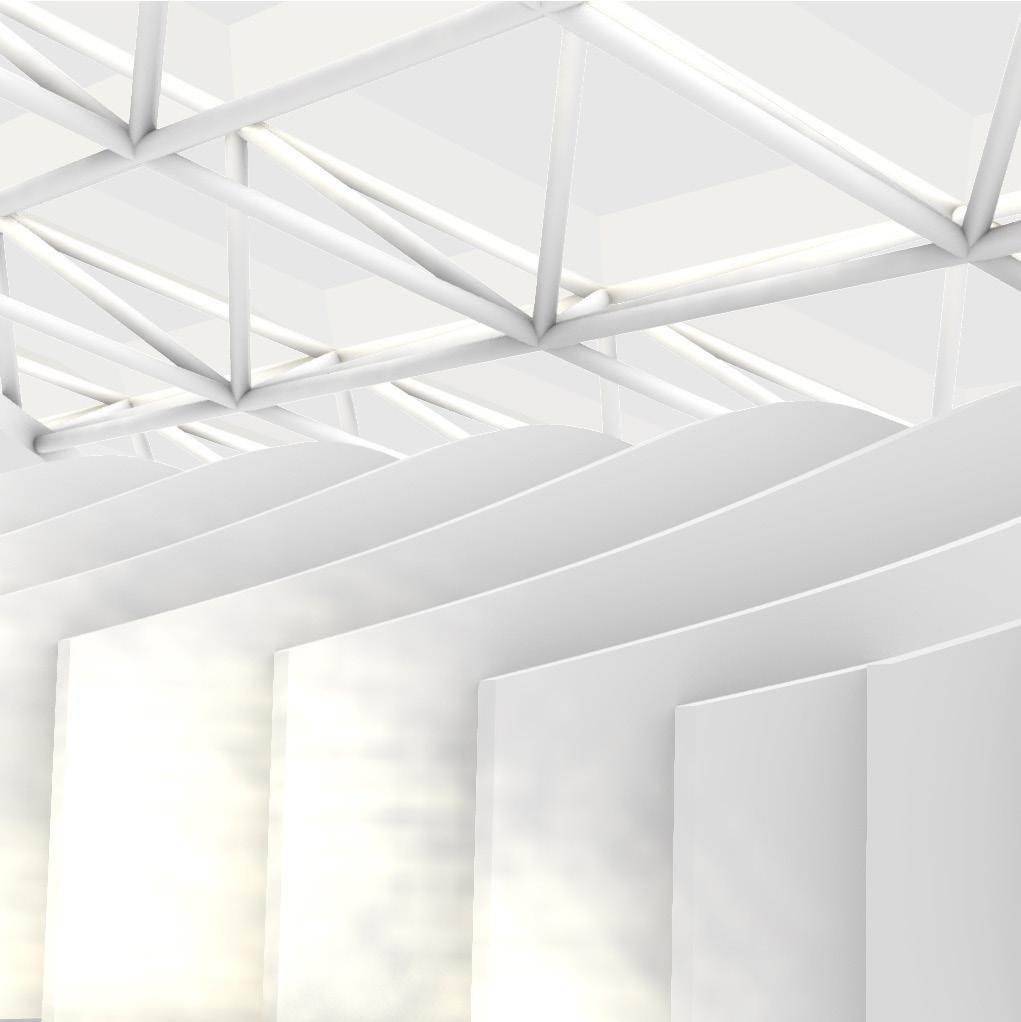 Yasaman Pazoki Toroudi
Yasaman Pazoki Toroudi
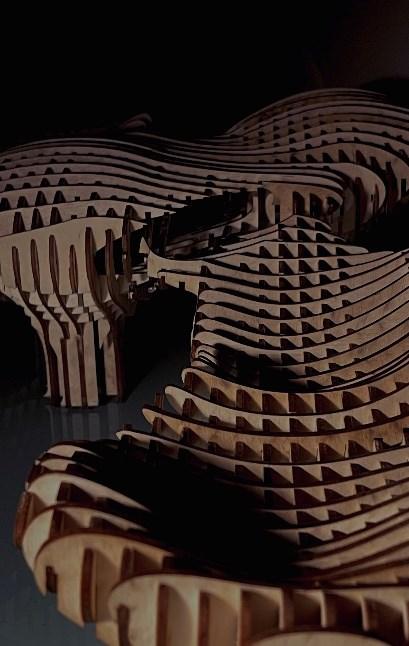
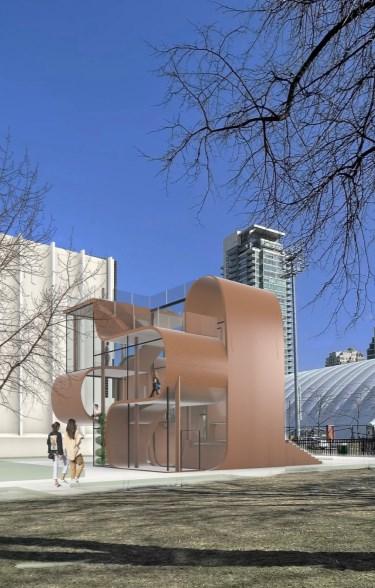
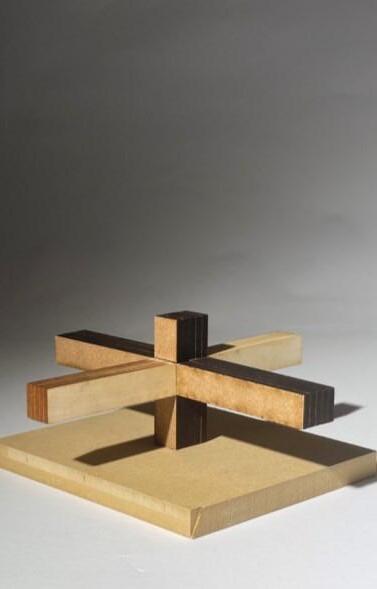
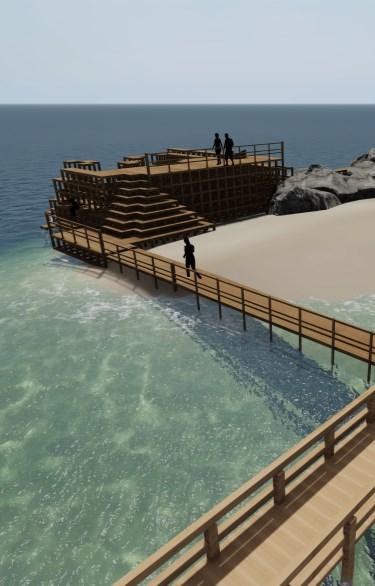
1 2 3
To Fold Metropol Parasol Sashimono Beausoleil
Beausoleil Island
5 6 7
Expending Housing Diversity, Scarborough
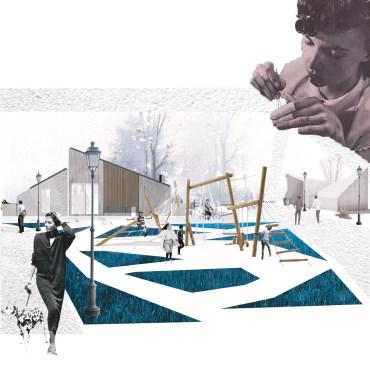
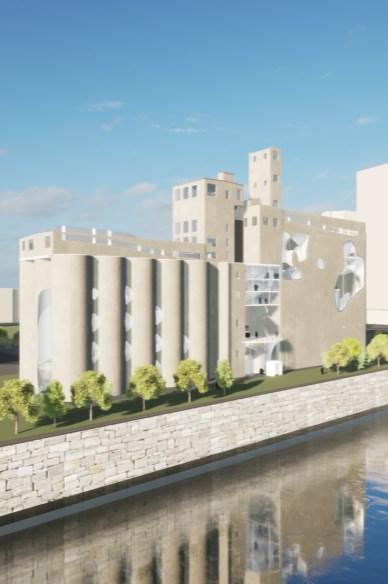

Bounding Box
Faith to Form
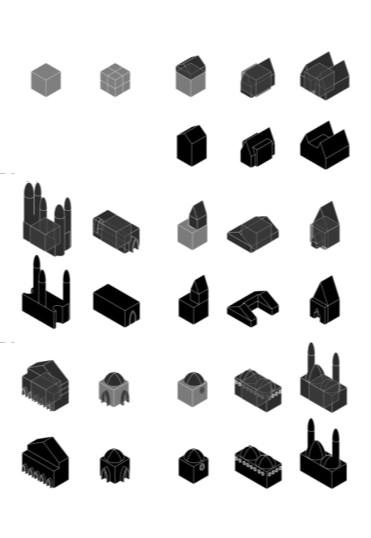
4
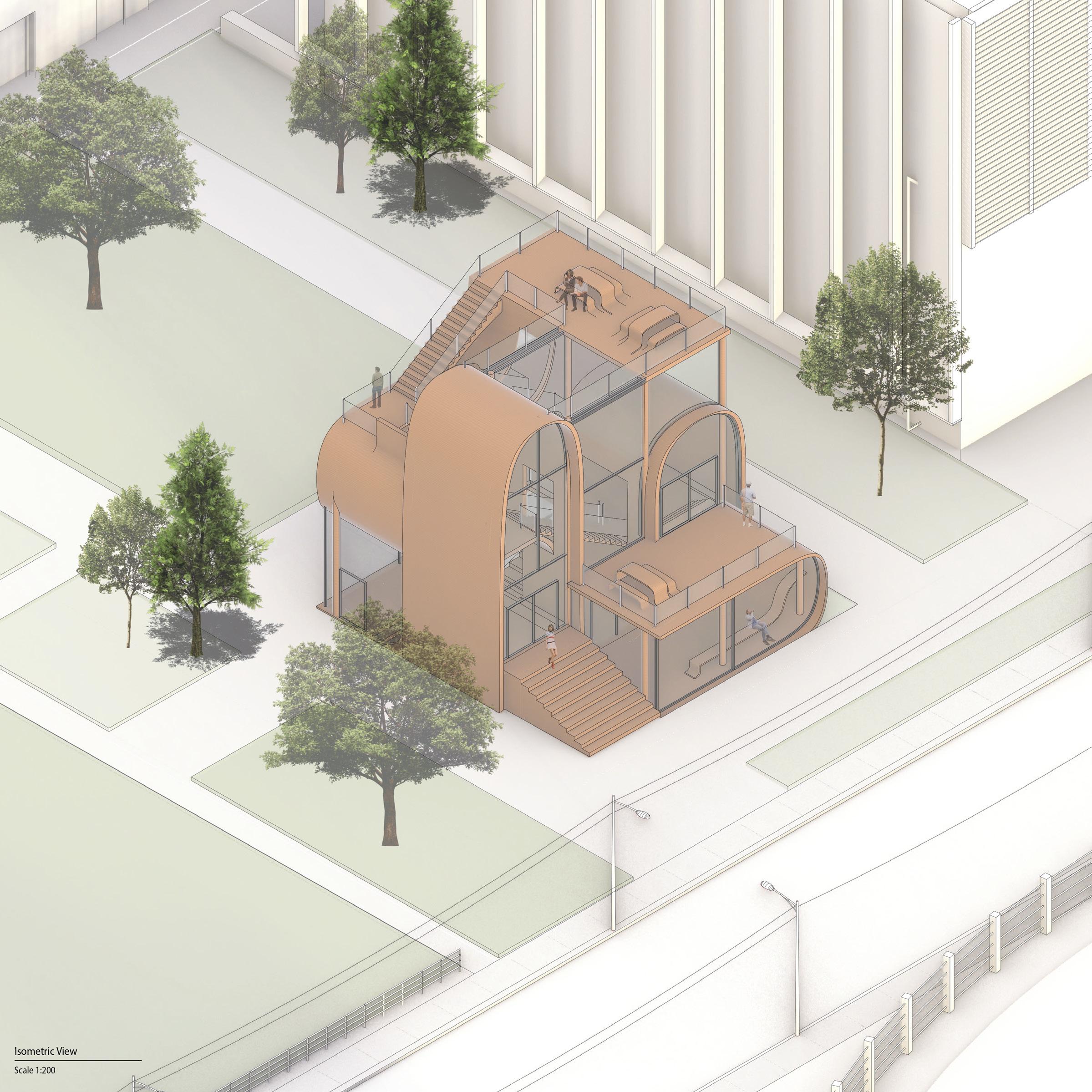
1
To Fold
This project aims to create more effec�ve and relaxing spaces for studying via design centered around wood and natural light. By working with pliable surfaces, I saw this project as prac�ce for finding the rela�onship of the interior and exterior and unifying of the walls, roof, floors and even furniture in some rooms. The space is designed with open balconies that overlook the surrounding environment, as well as semi-open and closed rooms for studying. The use of wood provides a calming and soothing atmosphere, crea�ng an environment that is conducive to focused and produc�ve studying. Addi�onally, the effec�ve design of natural light helps to create a bright and invi�ng atmosphere that promotes alertness and concentra�on.
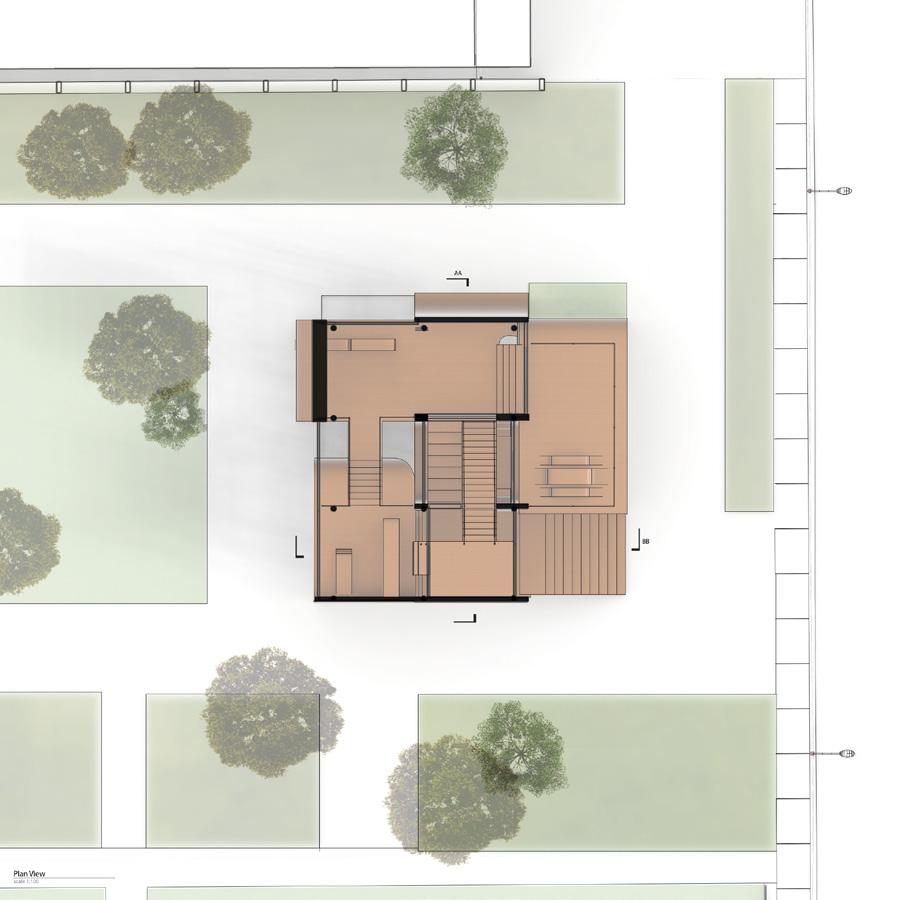
Instructors: Fiona Lim Tung, R. Shane Williamson
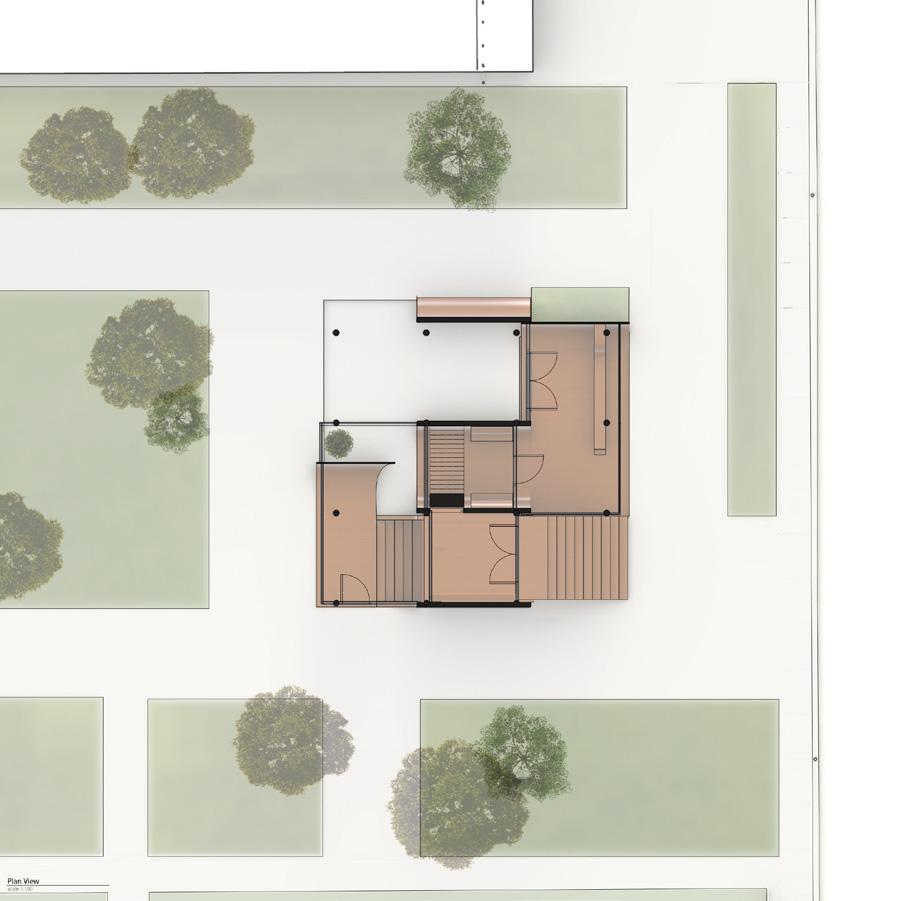
1
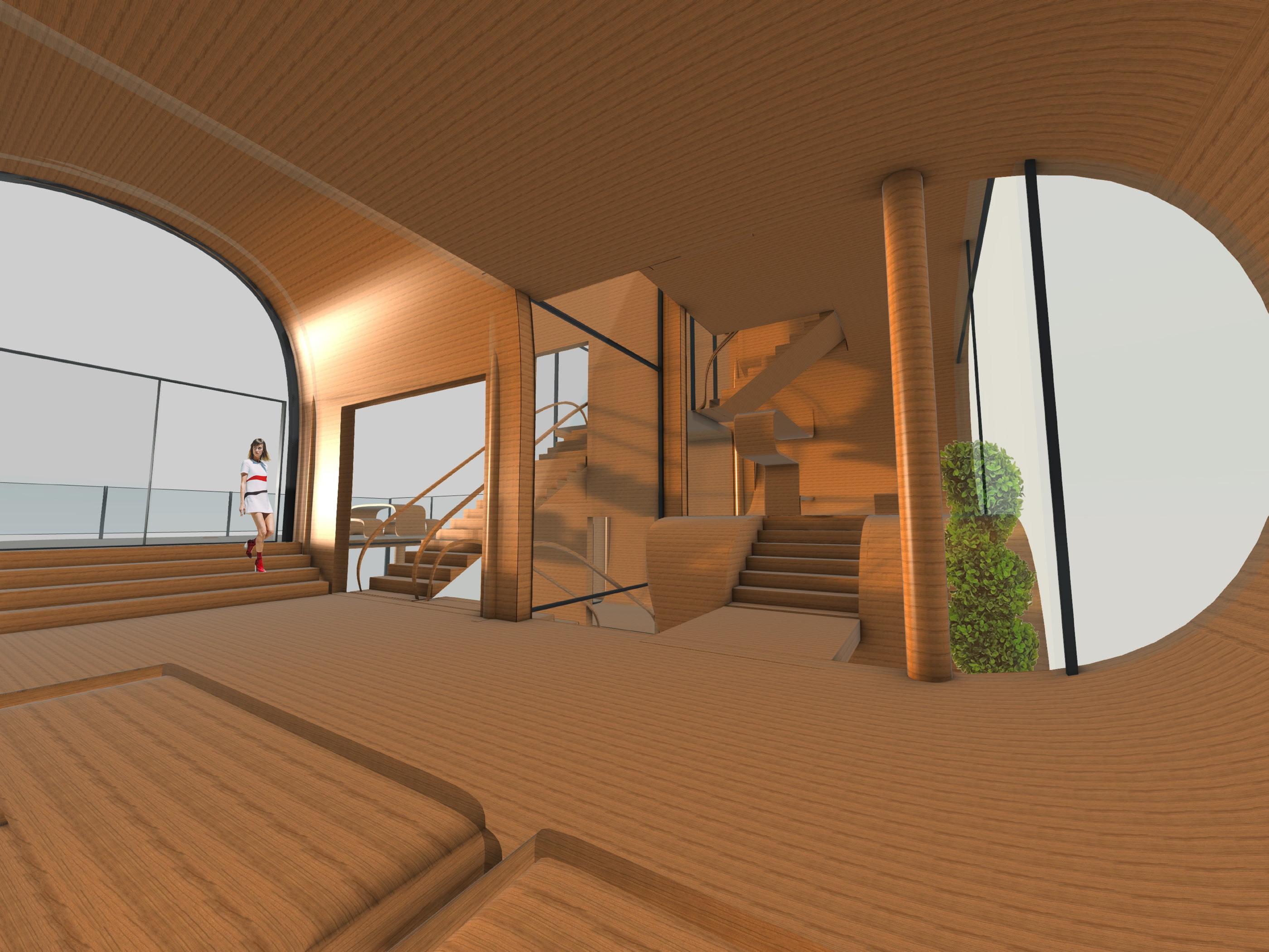

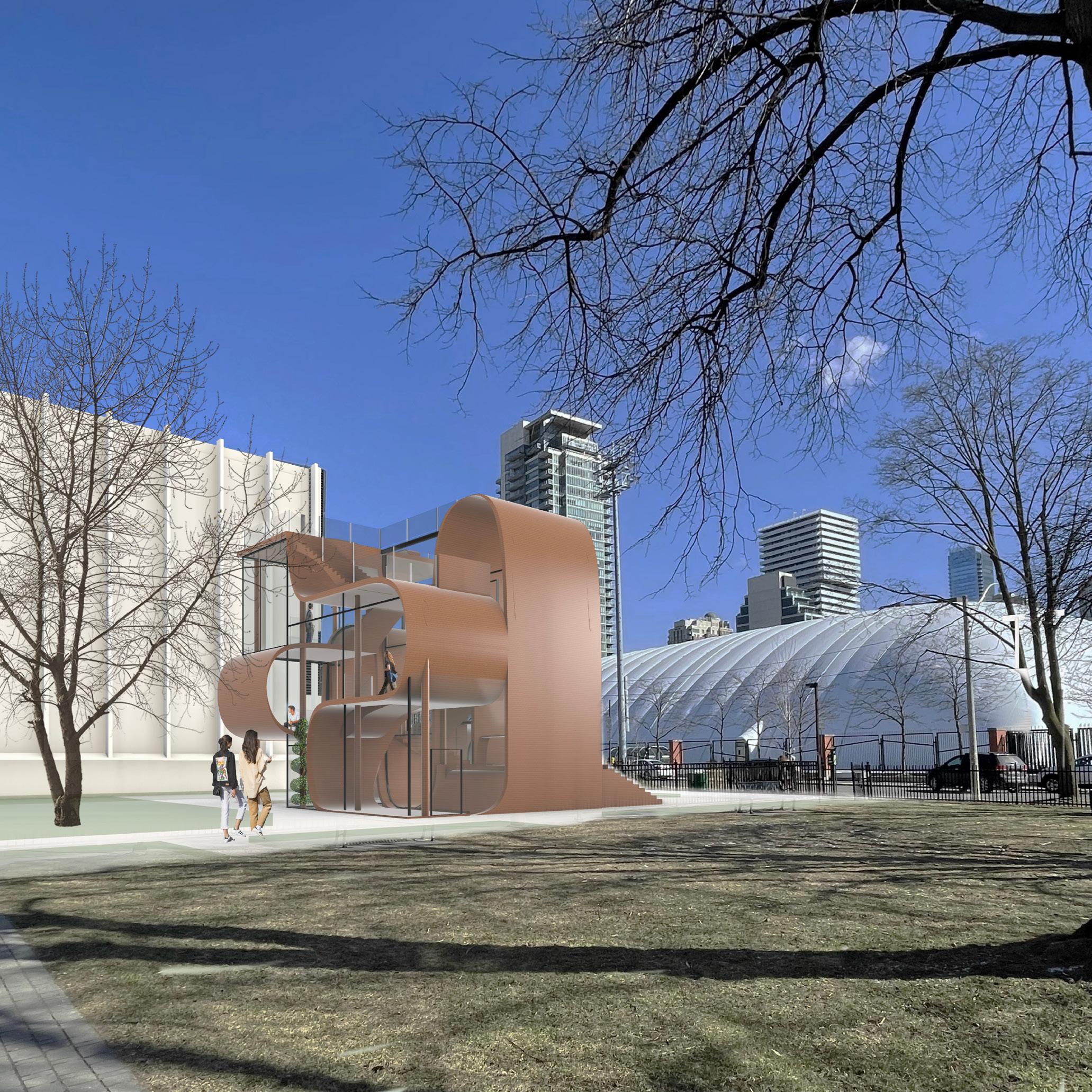
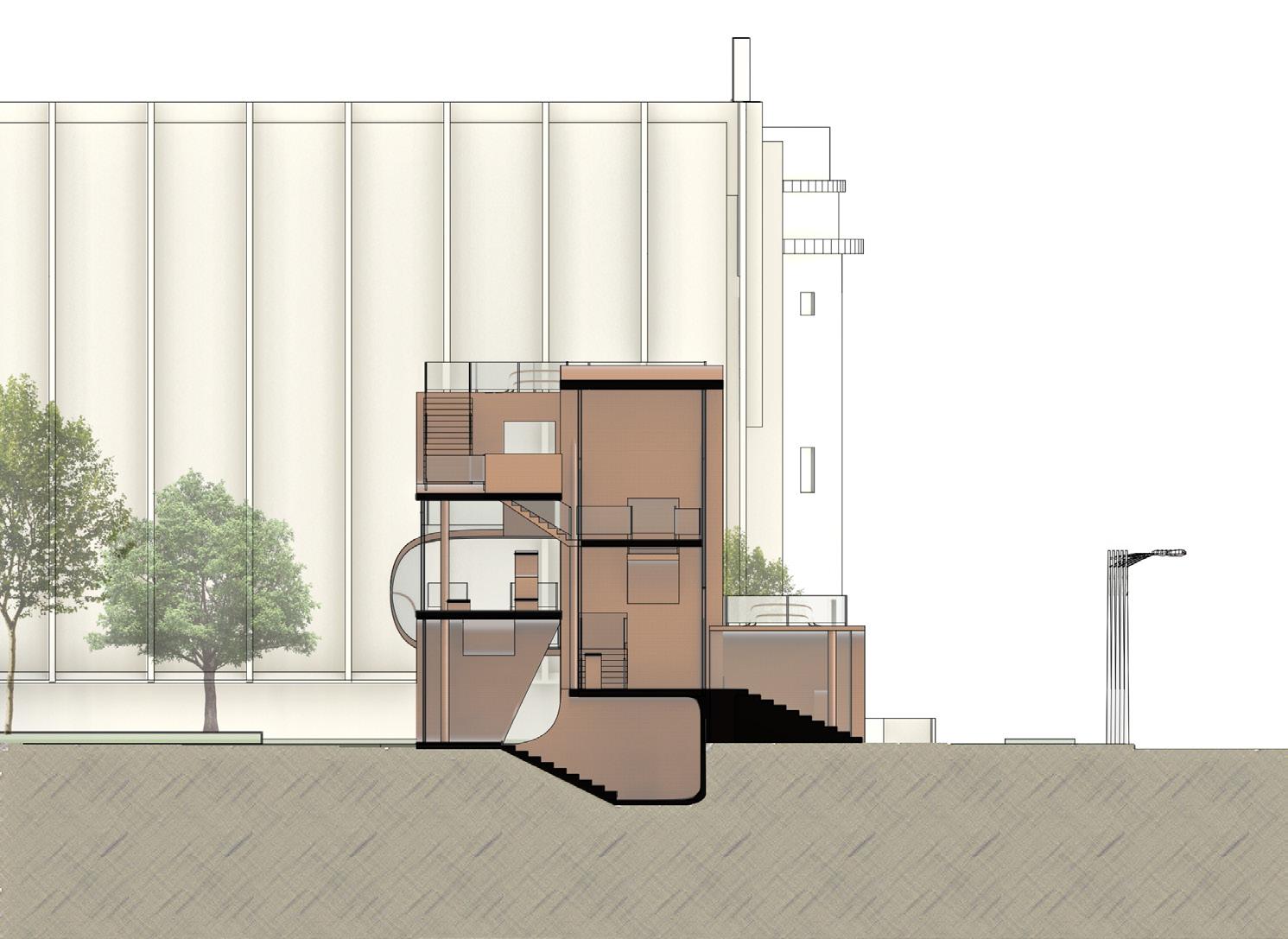
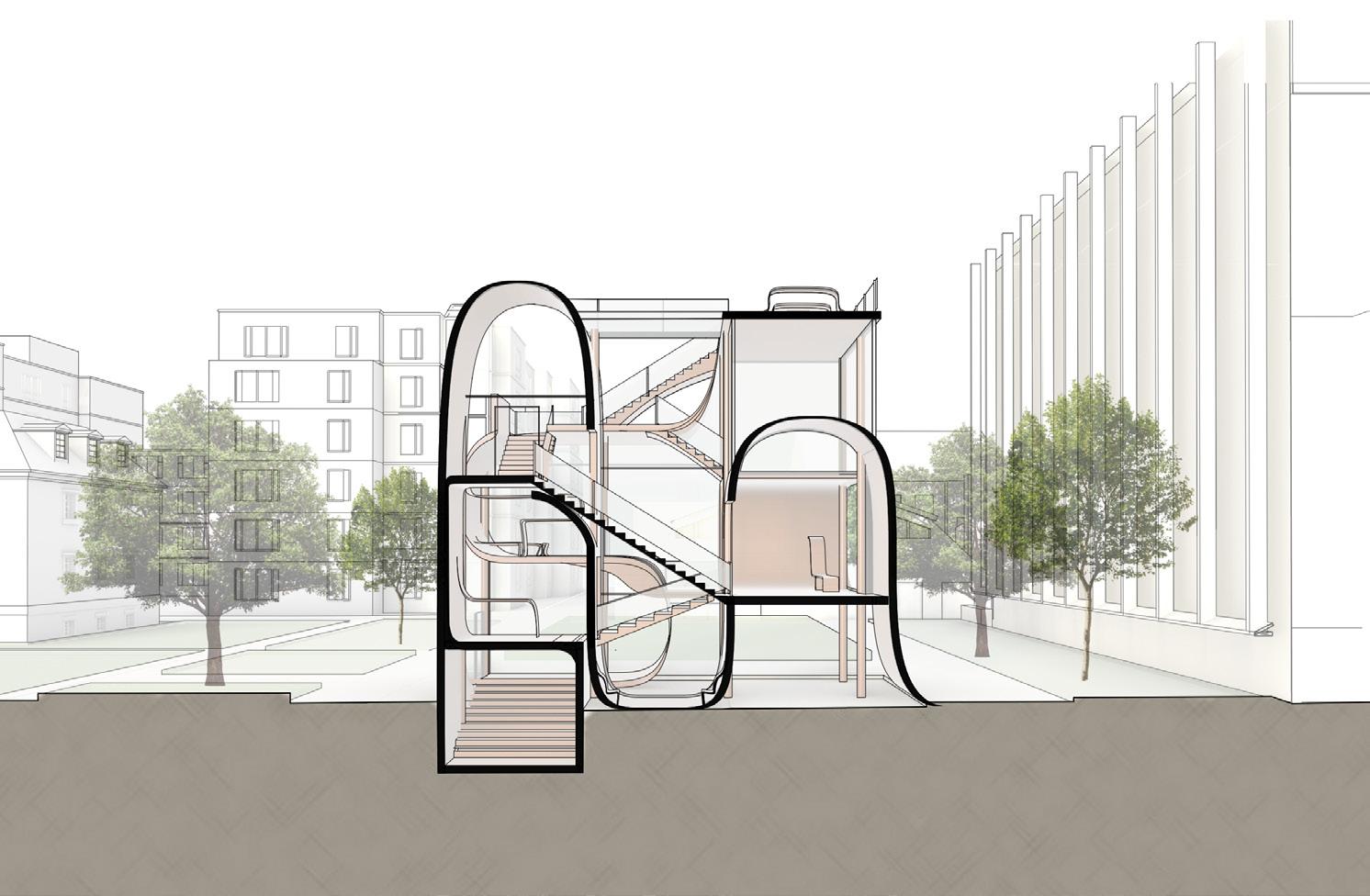
Sec�on BB Scale 1:100 Sec�on AA Scale 1:100
This project inves�gates the laminated �mber structure of Metropol Parasol, which is situated at Plaza de la Encarnacion, Seville and was designed by Jurgen Mayer. Our focus is on represen�ng the joining mechanism of the structure through a series of tectonic drawings.
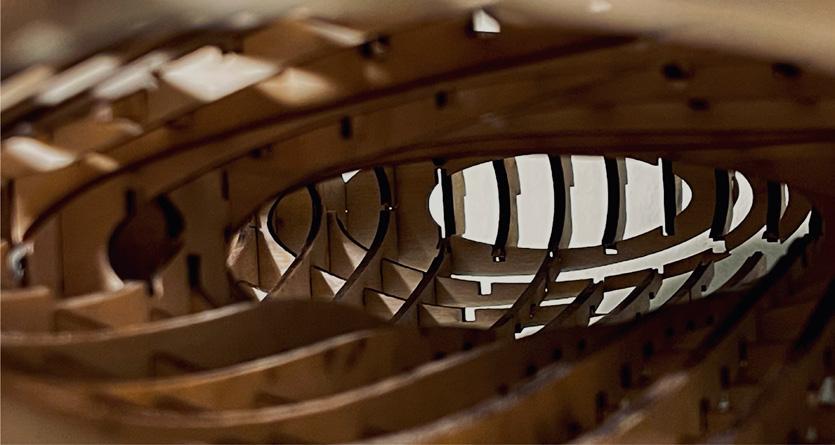
Metropol Parasol is one of the largest �mber structures ever constructed, consis�ng of bonded �mber cut-outs held together using the BESISTA tension rod system. The tension rods are hot-dip galvanized with threads that lack covering sleeves. The exposed pressure-treated wood is covered with a 2-3-millimetre-thick polyurethane coa�ng that is both waterproof and diffusion-permeable. This coa�ng serves to protect the roofless structure from the damaging effects of weather.
The physical model is cra�ed using a combina�on of laser cu�ng and assembly techniques, involving the careful construc�on and integra�on of over 250 wood pieces.
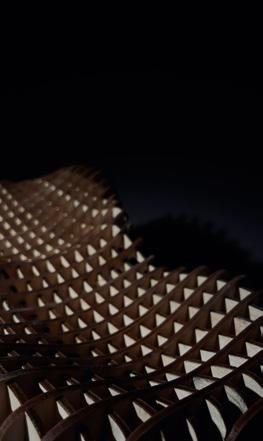

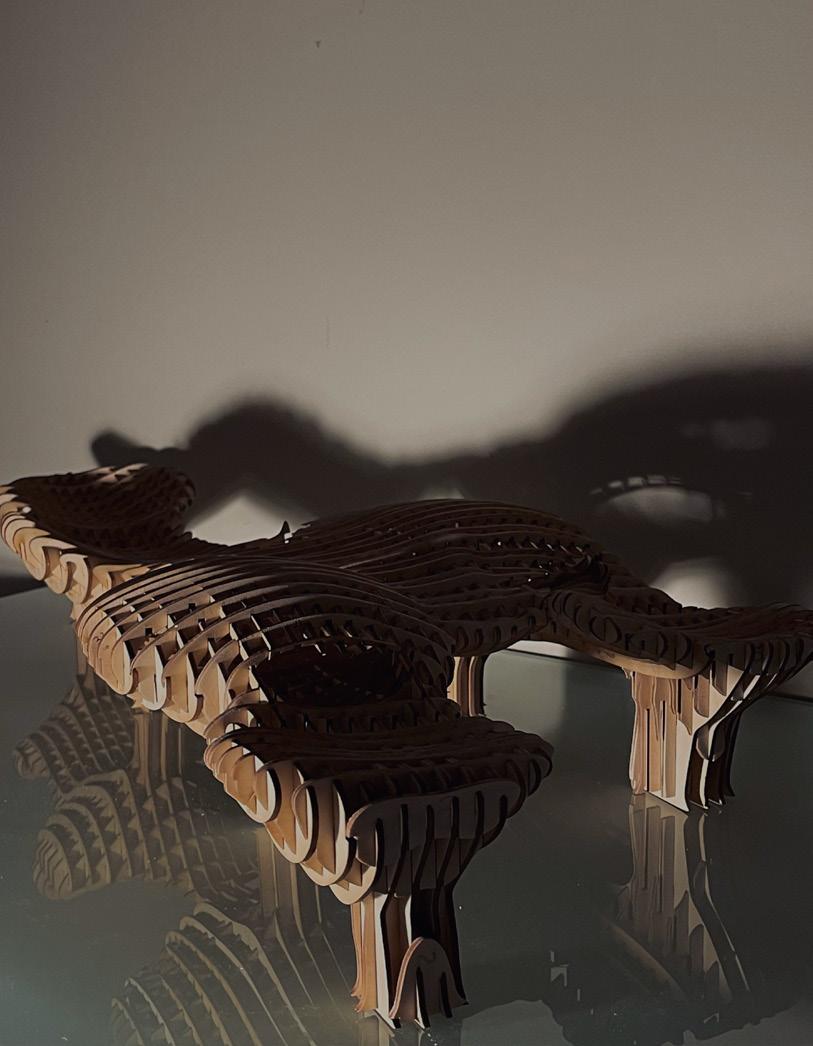
2 Metropol
Parasol
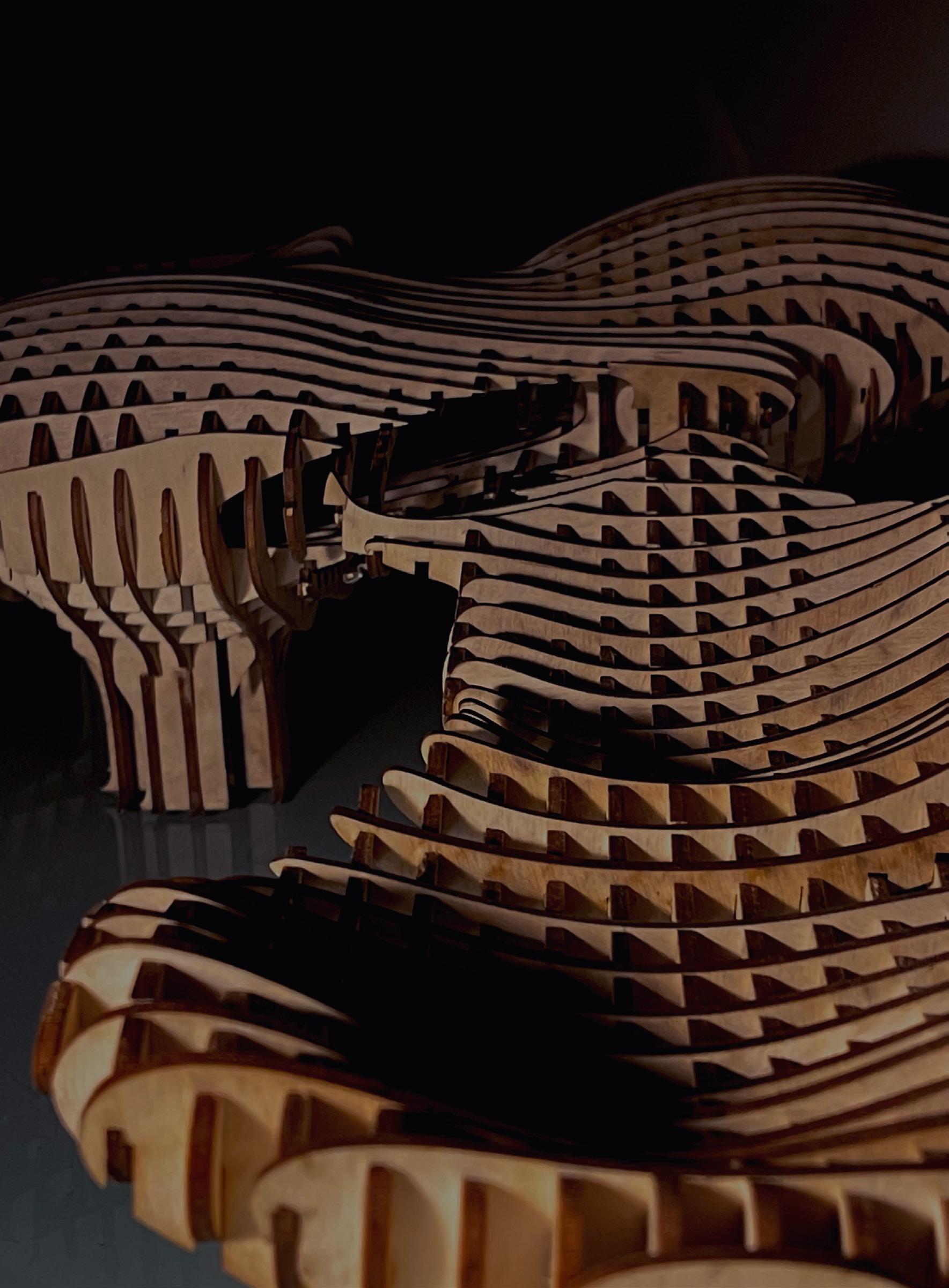 Instructor: Nicholas Hoban
Project by Yasaman Pazoki and Abdul Rahman Syed
Instructor: Nicholas Hoban
Project by Yasaman Pazoki and Abdul Rahman Syed




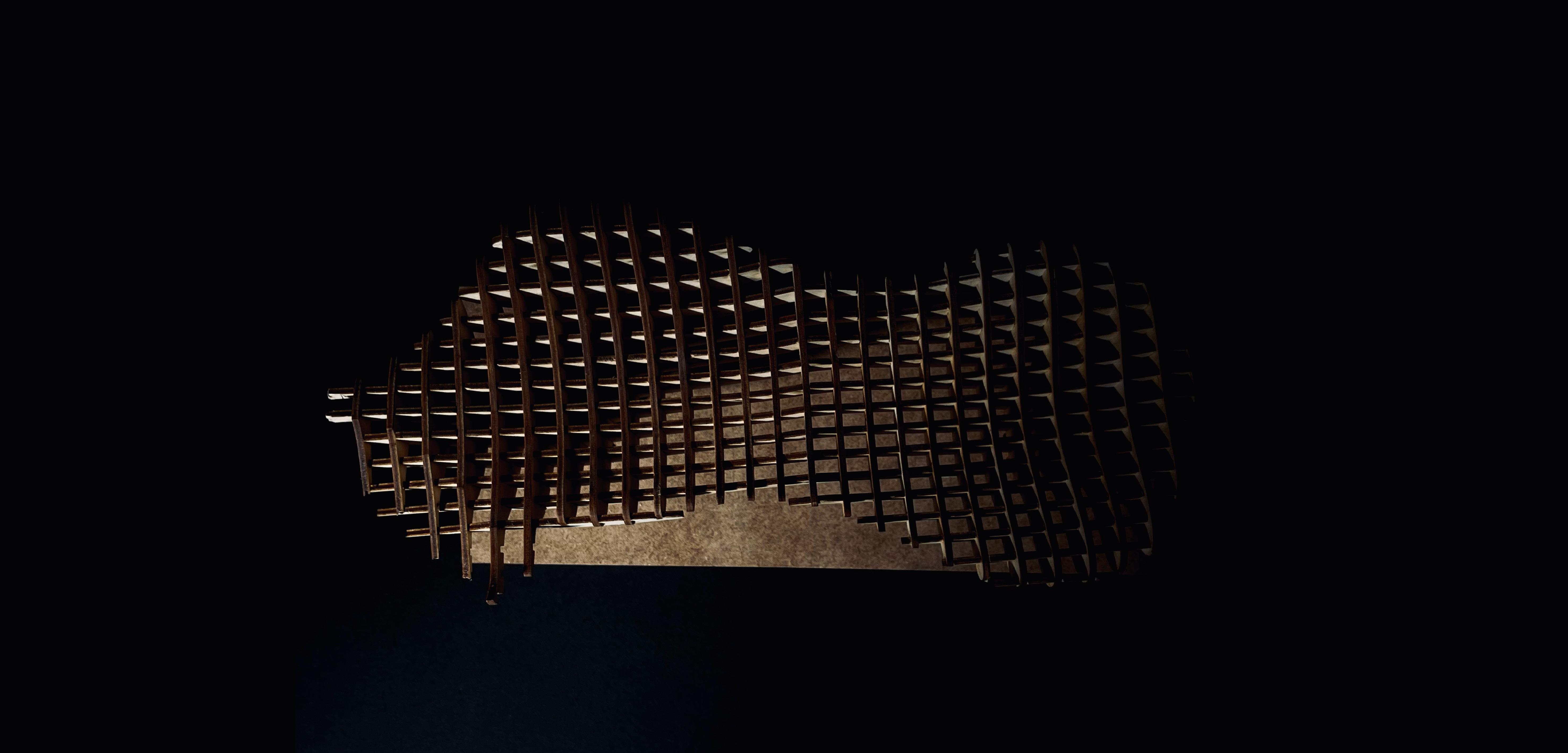 Top view of the physical model
Top view of the physical model

SASHIMONO
This project investigated various variations of joints inspired by traditional Japanese wood joinery, specifically the ‘Sashimono’ technique. This technique involves assembling wood using complex shapes to create strong and durable joints without the use of nails or any metal fasteners. The unique and interesting aspect of these joineries was their complex shapes. The aim of this study was to explore how these complex shapes could be simplified into simple geometry.
During the course of the project, the order of assembly emerged as a crucial factor in creating a new cohesive joint system. To achieve this, two main types of joints were developed, inspired by sampo-zashi on three sides and shiho-zashi joint on four sides. These joints were carefully incorporated into the design, resulting in a unique and durable structure.
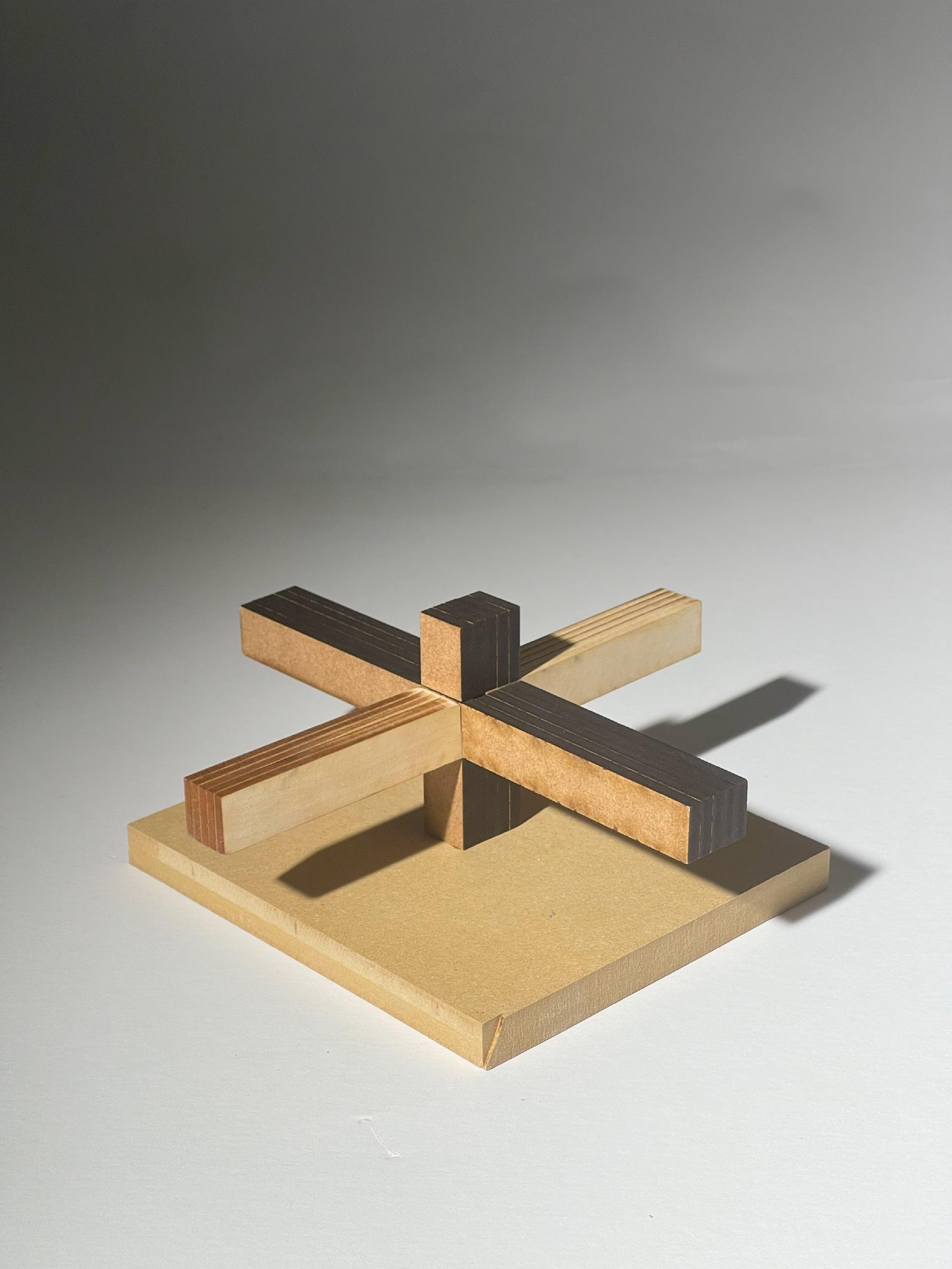 Instructor: Nicholas Hoban
Instructor: Nicholas Hoban
3
Project by Yasaman Pazoki and Abdul Rahman Syed
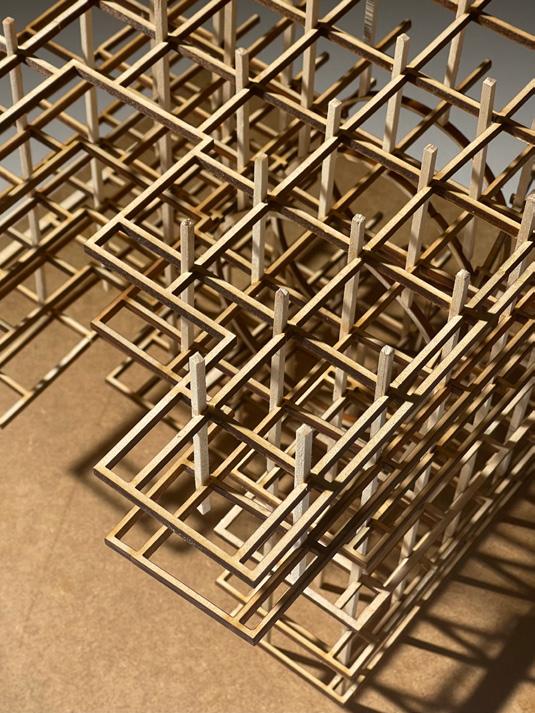
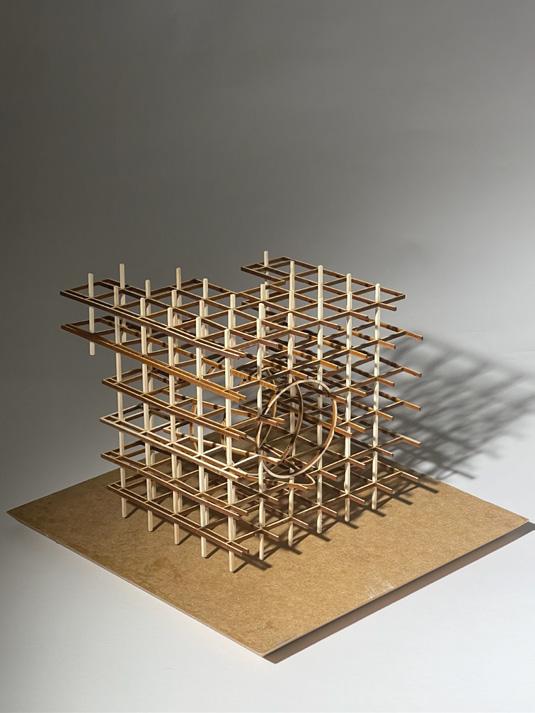
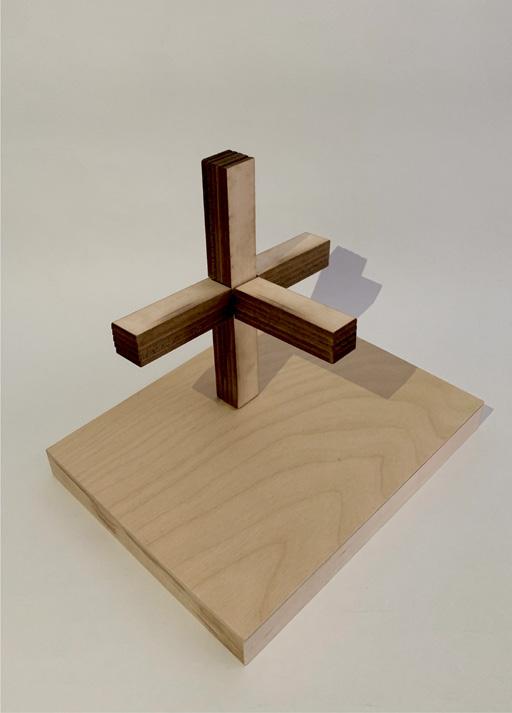
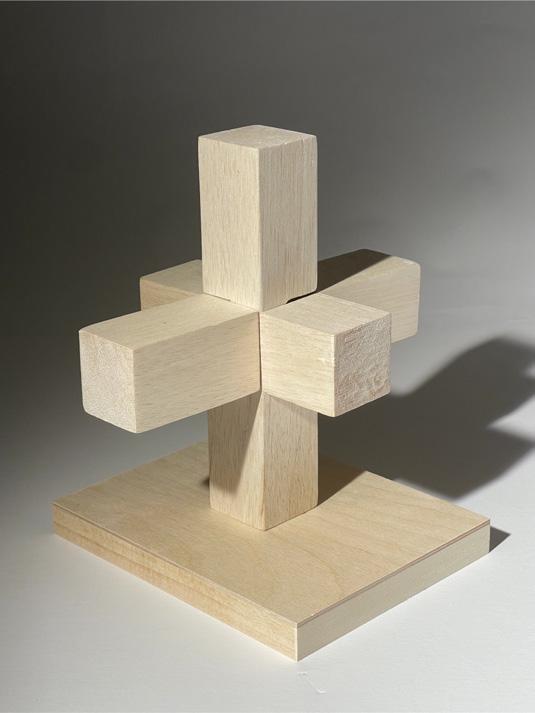
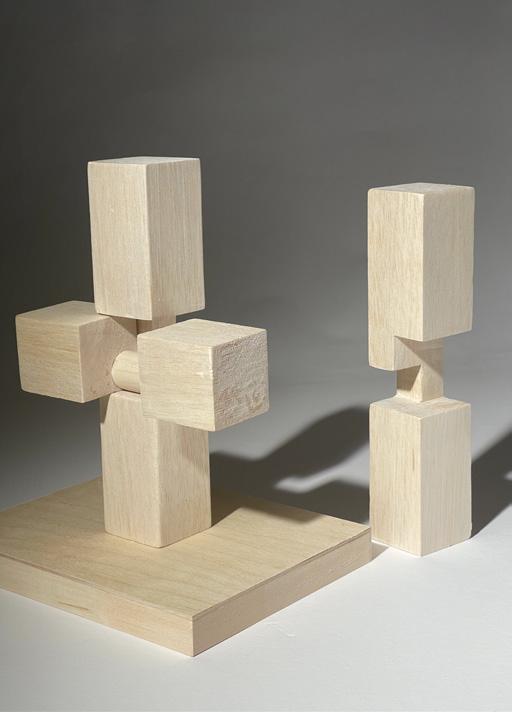
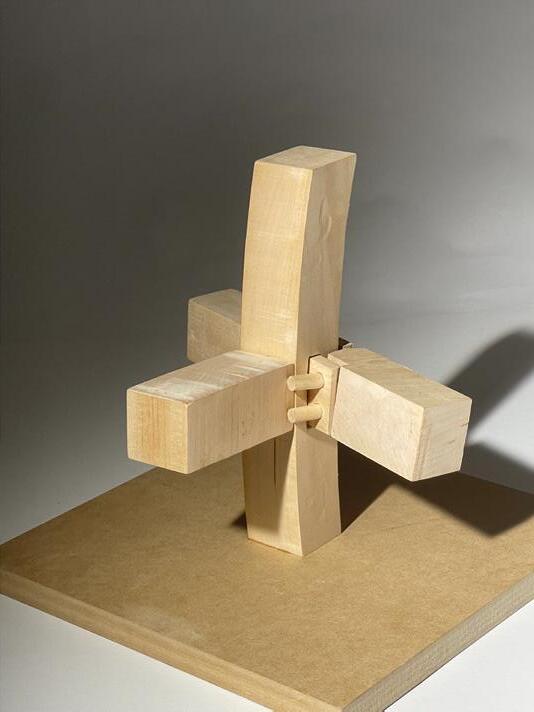
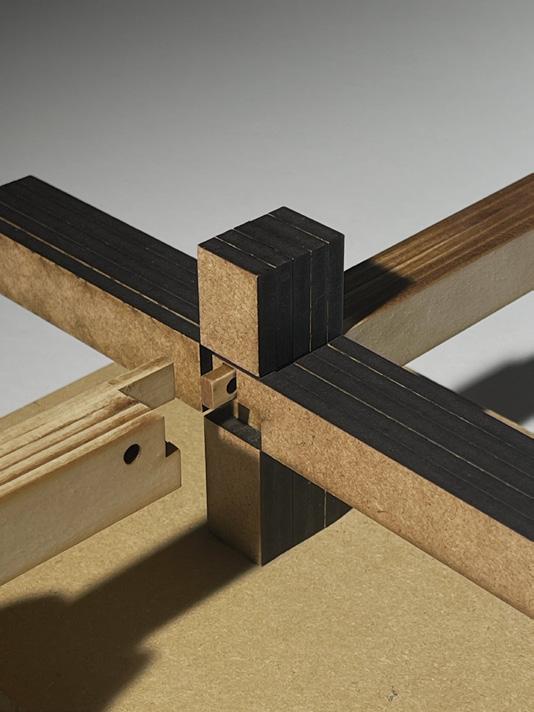
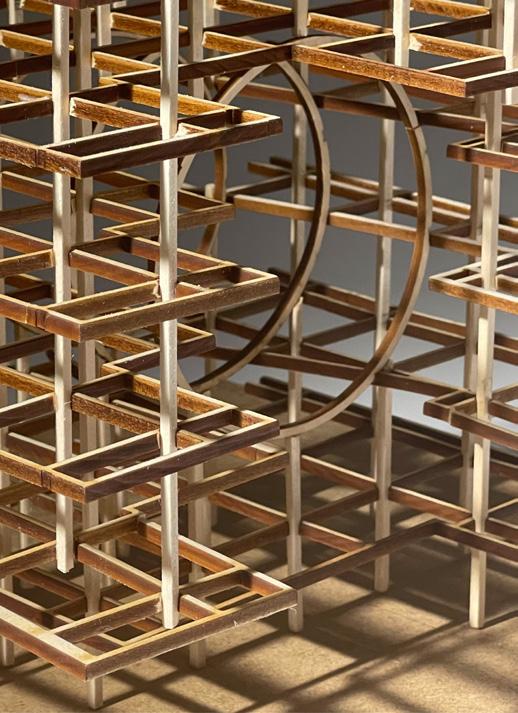
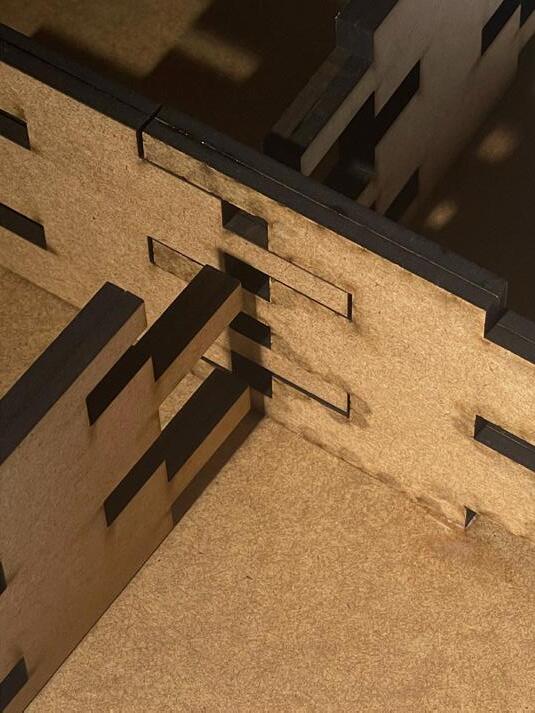 shiho-zashi
sampo-zashi
shiho-zashi
sampo-zashi
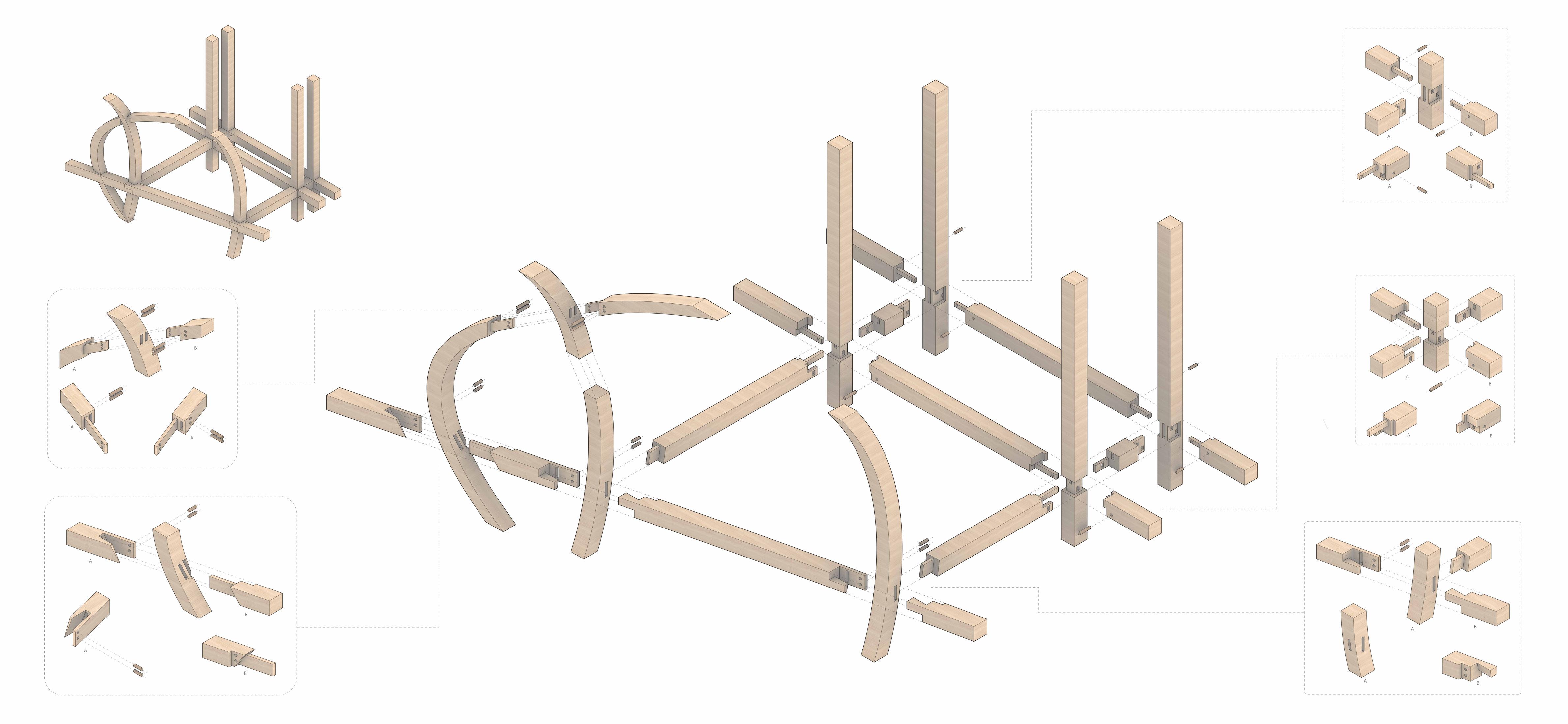

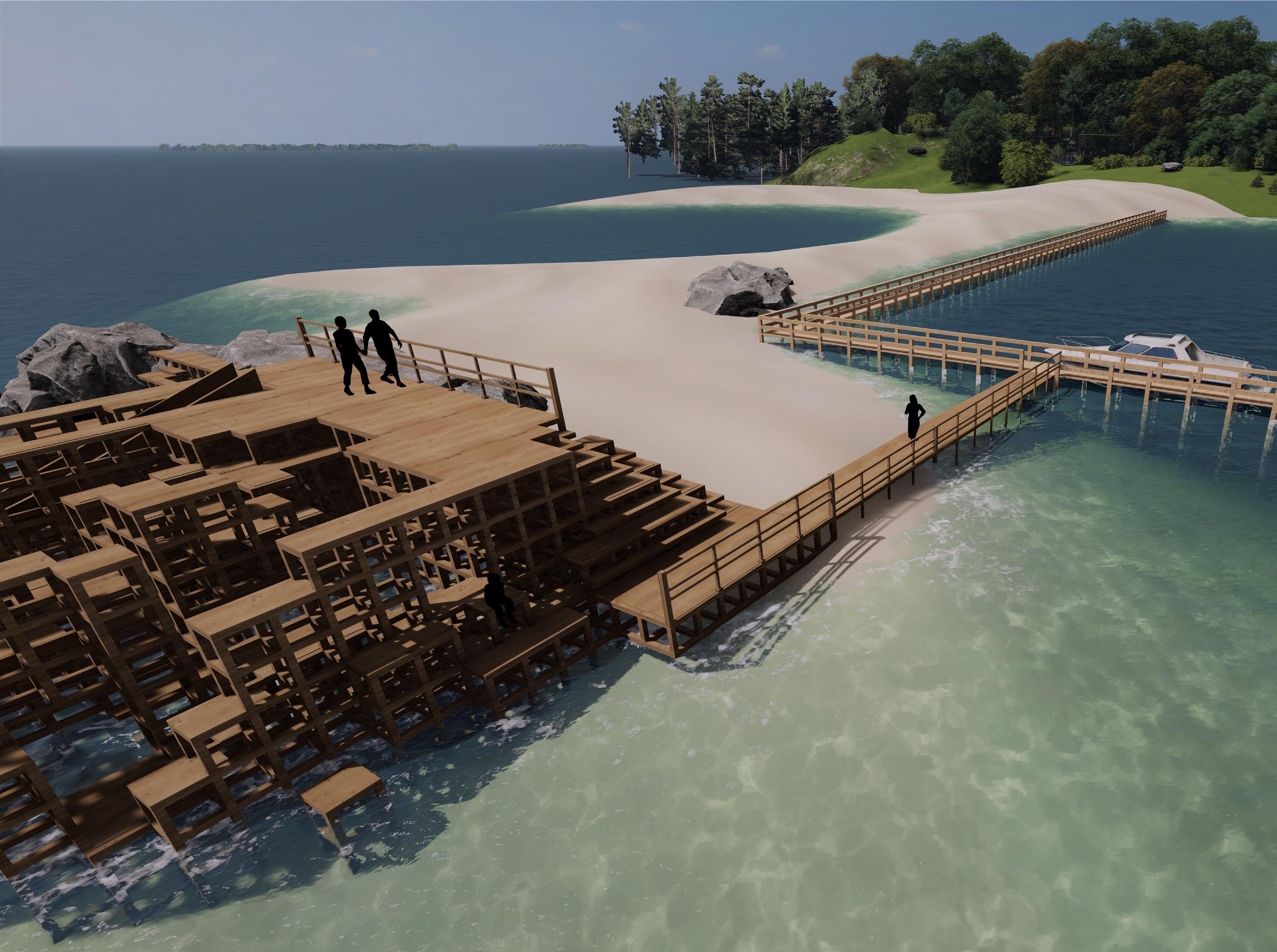
Pr
Beausoleil Island
Instructor: Nicholas Hoban
Project by Yasaman Pazoki and Abdul Rahman Syed
This project is centered around Beausoleil Island, a captivating destination in northern Ontario. Our site embraces the essence of camping, hiking, and swimming, with a focus on utilizing the existing lake. We have constructed a captivating playground within the tranquil embrace of its waters. As one ventures from the shore, a gentle transition unfolds, guiding visitors towards the enchanting sight of a cascading swimming pool, offering a delightful invitation to immerse oneself in the waters and embrace the joys of aquatic exploration.
The design comprises three sections: an entrance that connects the existing bridge to our structure, a climbing area with different levels to enjoy the scenery, and a two-level swimming pool merging with the lake.
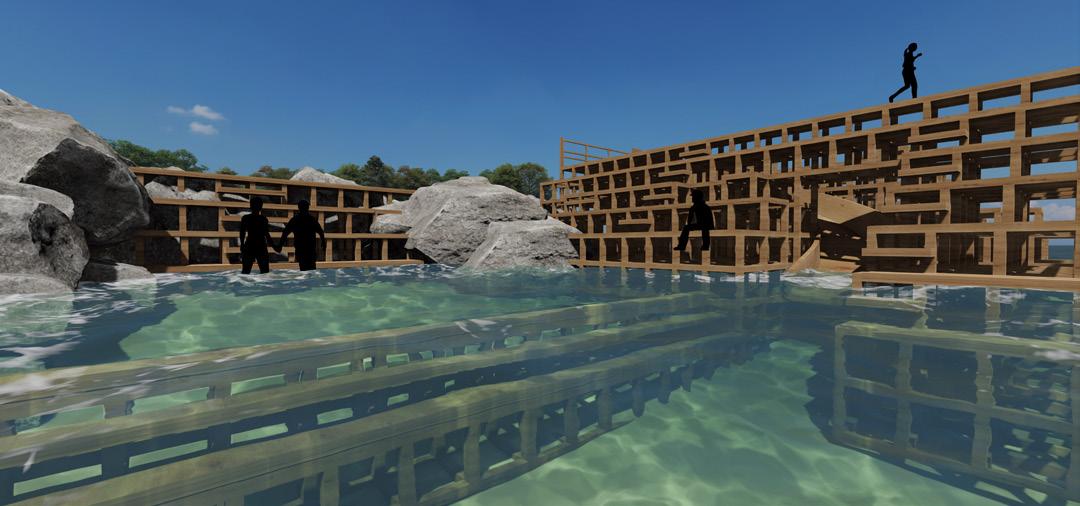
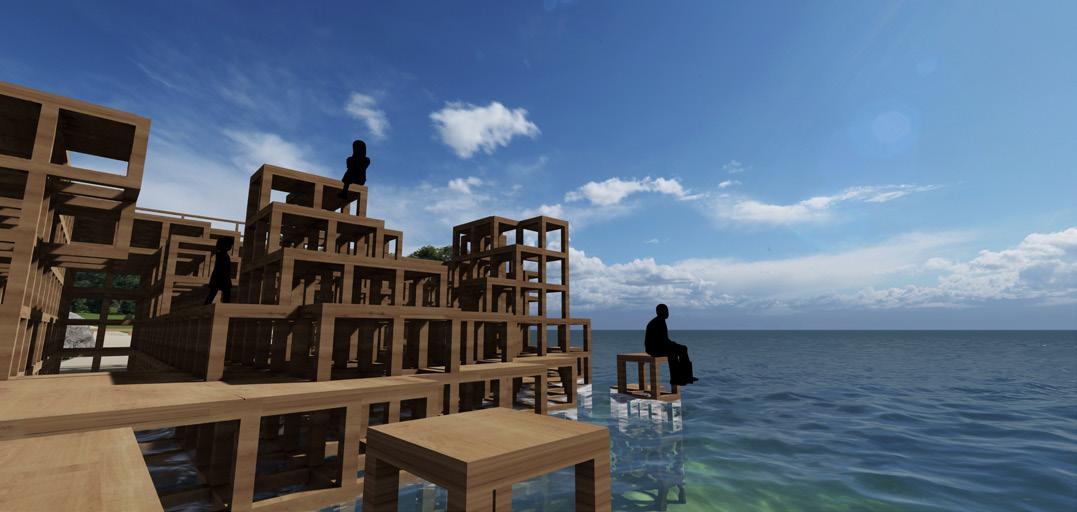

Additionally, this project provided valuable experience with 3D printing and CNC machines.
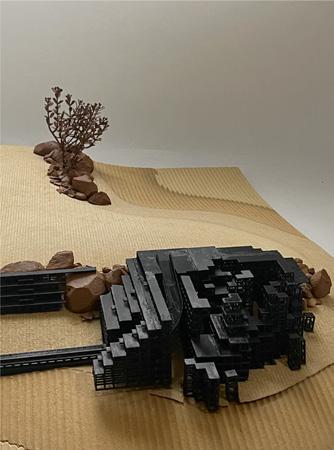
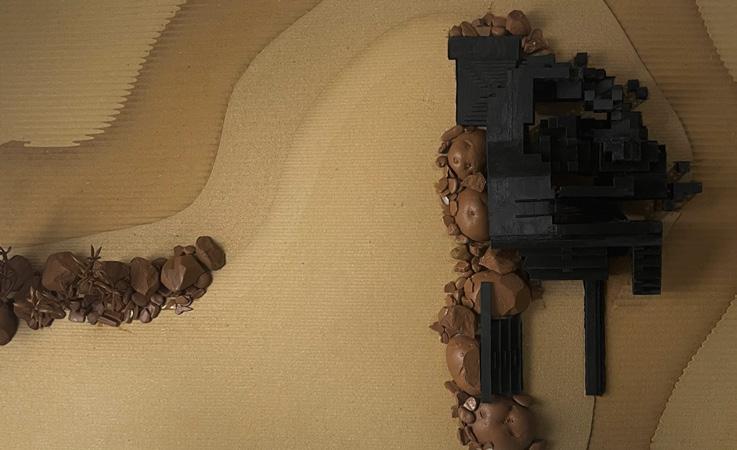
4
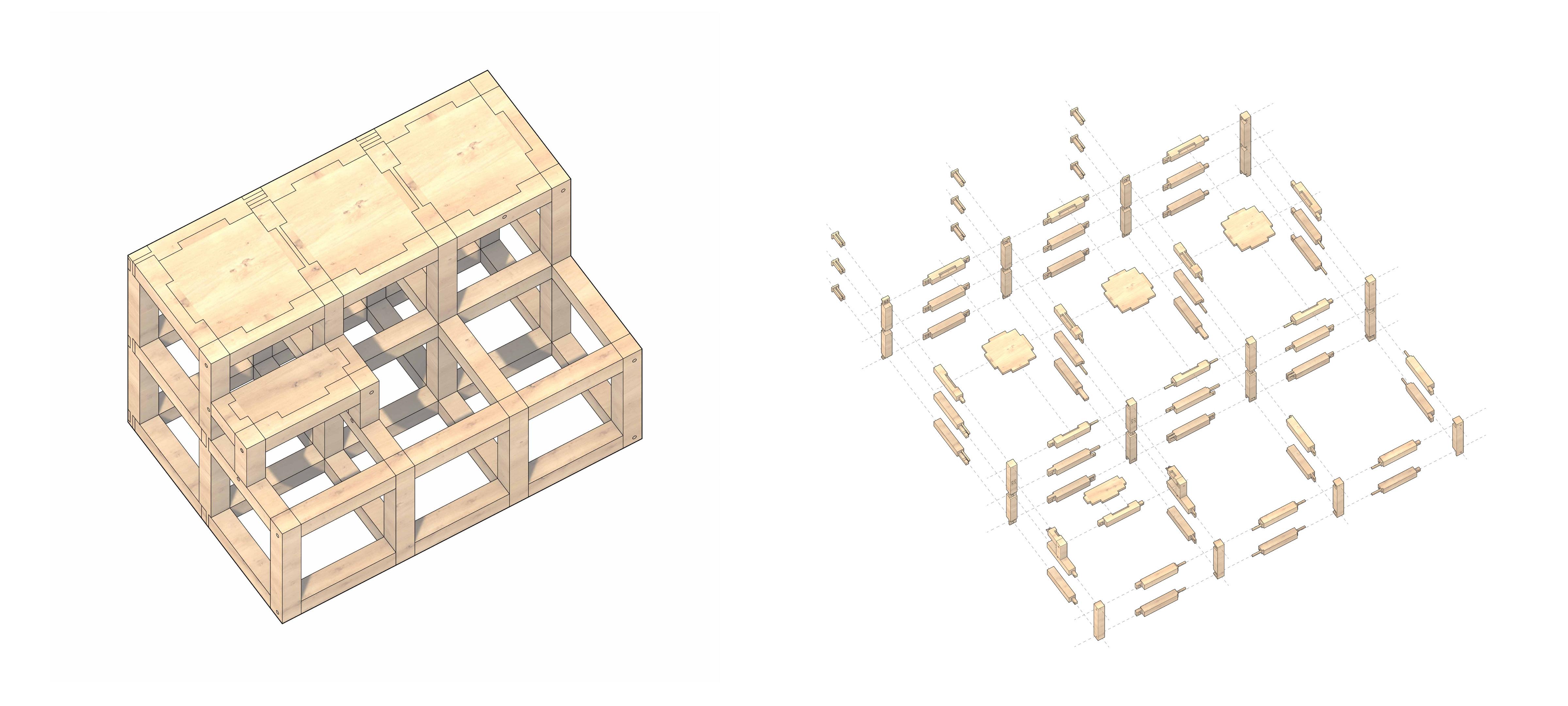 We implemented Japanese joinery principles to develop the joints in the grid system. This diagram provides a glimpse into a small section of our design, offering a closer look at the assembly's structural composition.
We implemented Japanese joinery principles to develop the joints in the grid system. This diagram provides a glimpse into a small section of our design, offering a closer look at the assembly's structural composition.

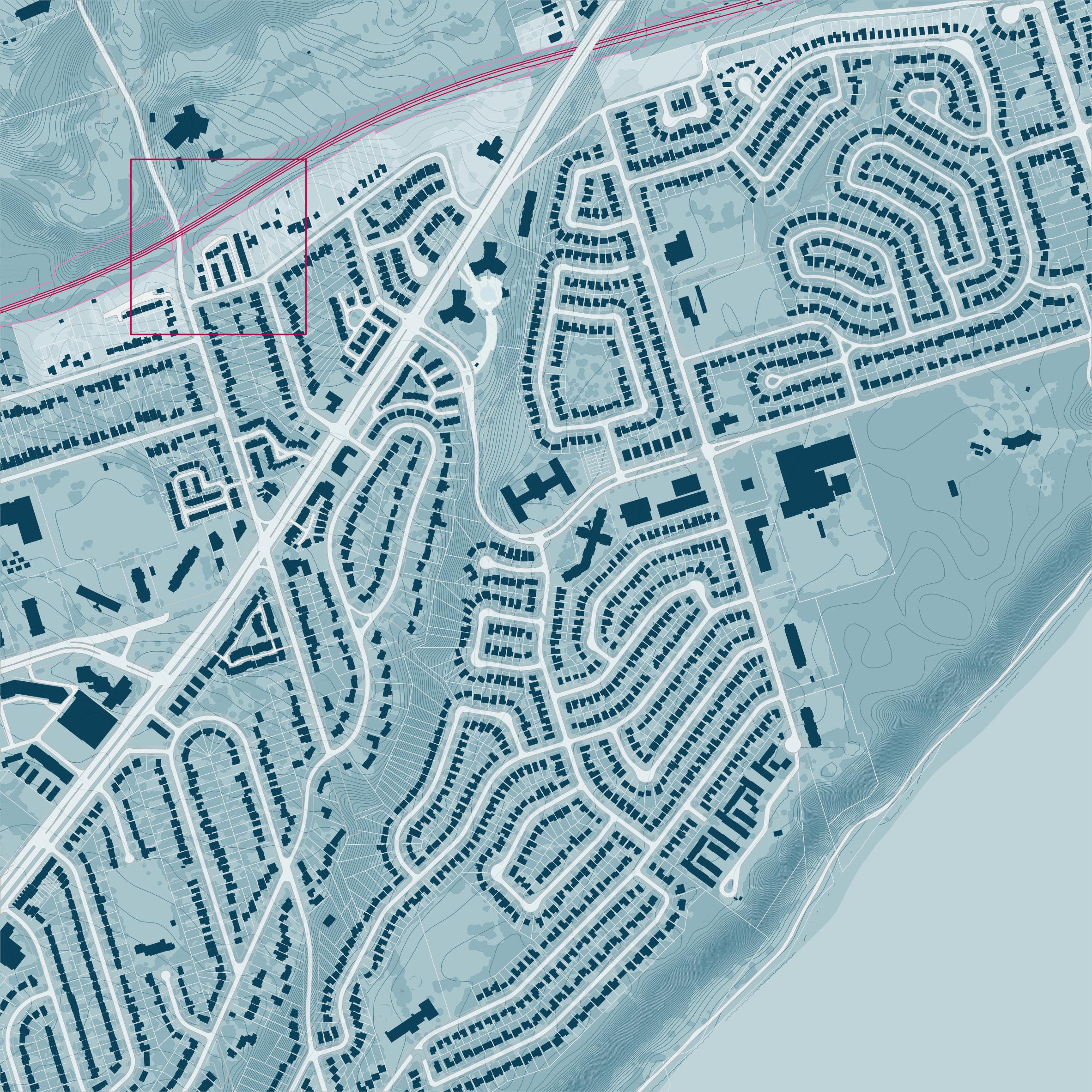
Expanding Housing Diversity in Scarbrough
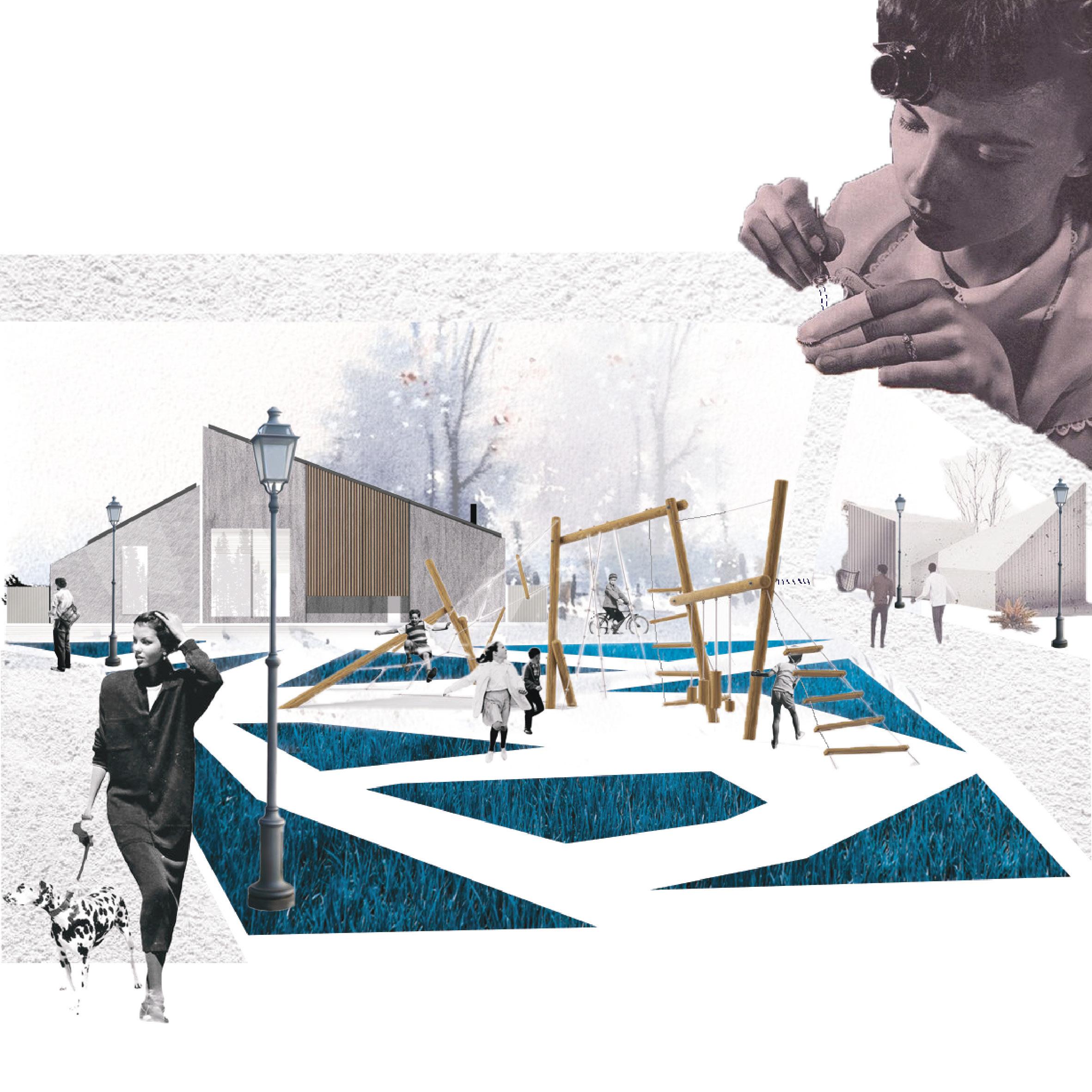
This project involves conducting an analysis of a specific site, focusing on housing typologies. After careful consideration, we have selected a typology and proceeded to add additional units based on our findings. The site in question is a 2 by 2-kilometer area located in Scarborough, positioned just above the lake. Primarily characterized as a low-density residential area, it features small businesses situated in the center, adjacent to Kingston Rd. Additionally, there is a golf course located at the top and a prominently highlighted railway line. Taking into account this context, my proposal aims to facilitate access to the additional housing units through the development of a new road. This road expansion is intended to provide improved connectivity and convenience. Furthermore, the units are categorized based on the diverse lot shapes found within the area, ensuring efficient land utilization and optimal urban positioning.
Instructor: Michael Piper, Scott Norsworthy
5
Existing context:
Proposed design:
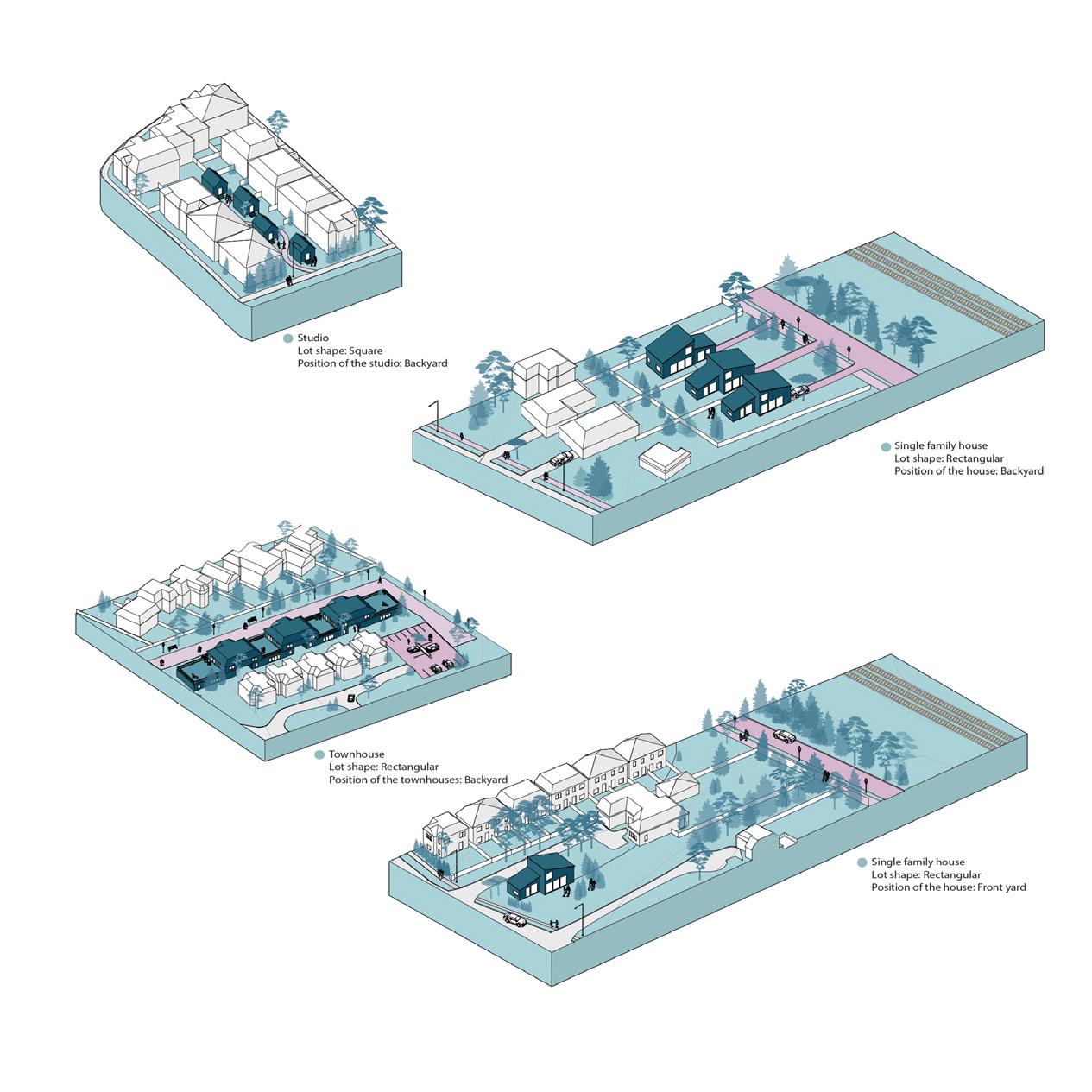
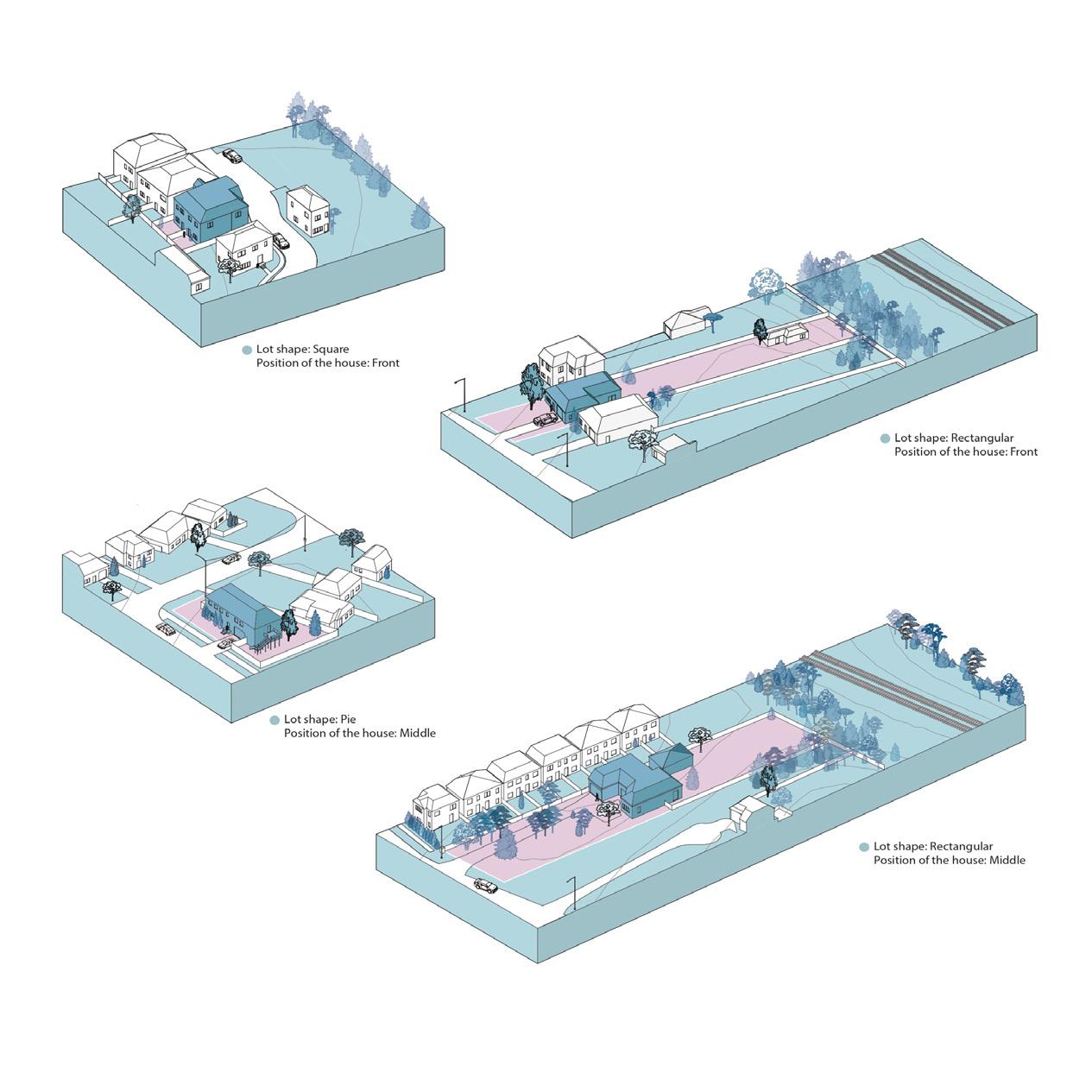
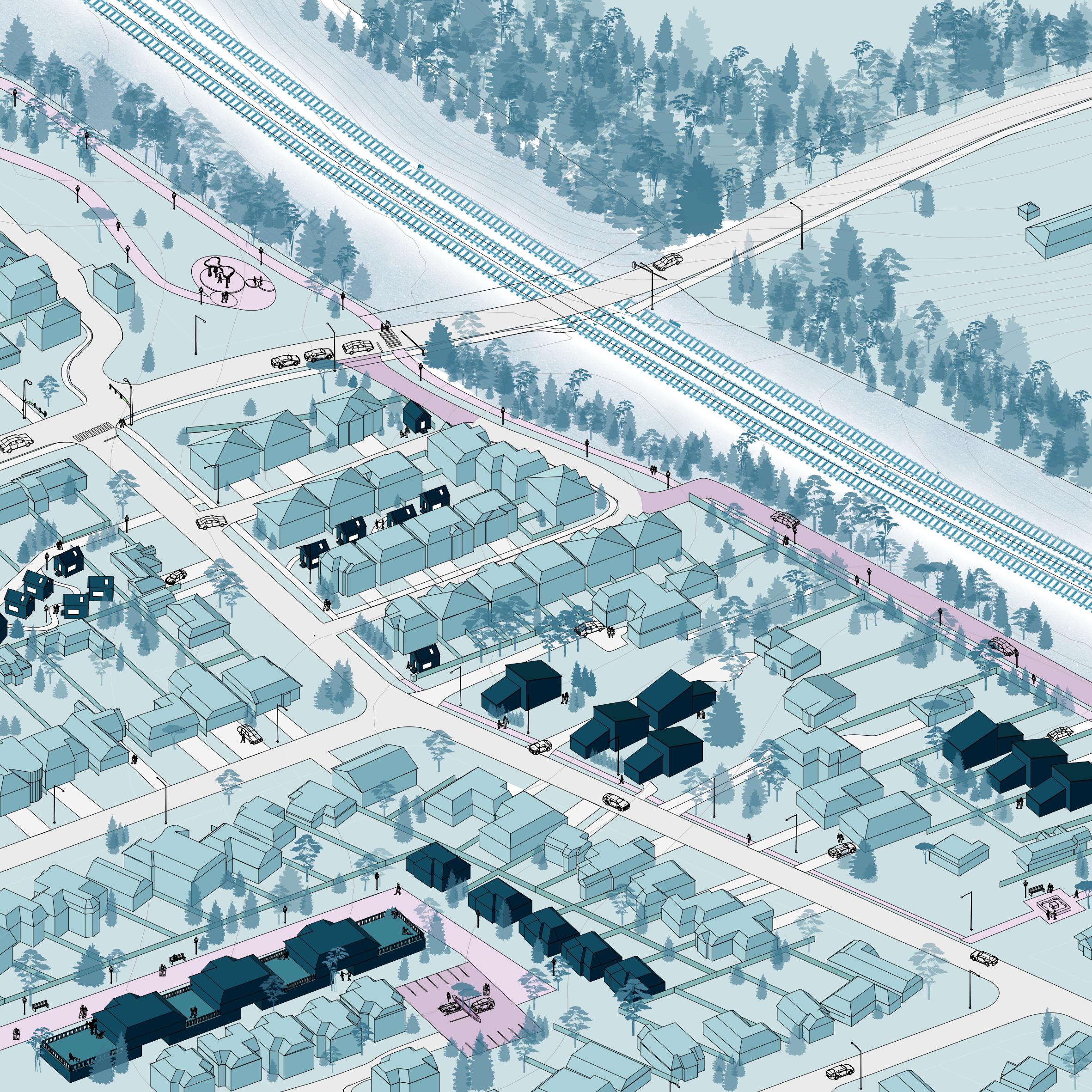
Housing intervention Street intervention New pedestrian road
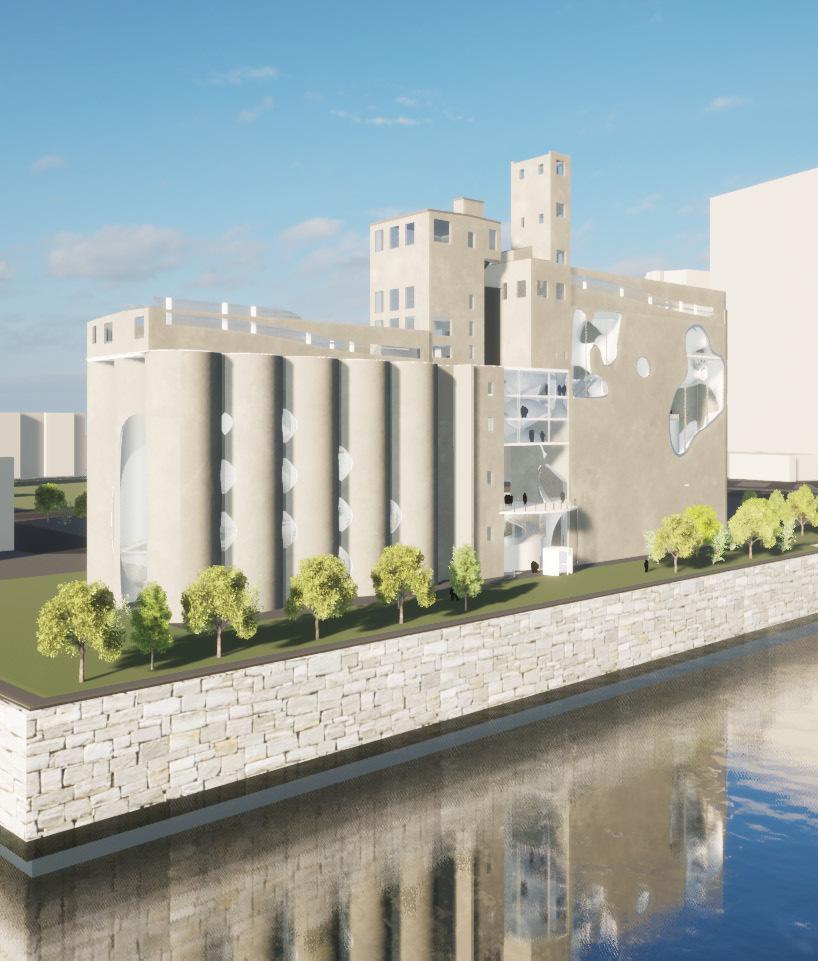
6
Bounding Box
In this project, we designed a mixed-reality cultural center/art museum by adaptively reusing the Canada Malting Silo Building, an existing industrial structure in downtown Toronto. The building, located at 9 Eireann Quay and designed by architect/engineer John Sanborn Metcalf in 1928, was abandoned by the Canada Malting Company in the 1980s.
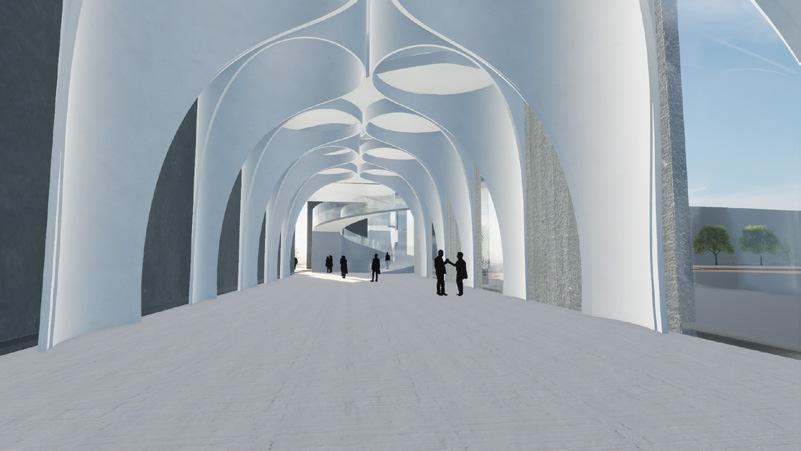
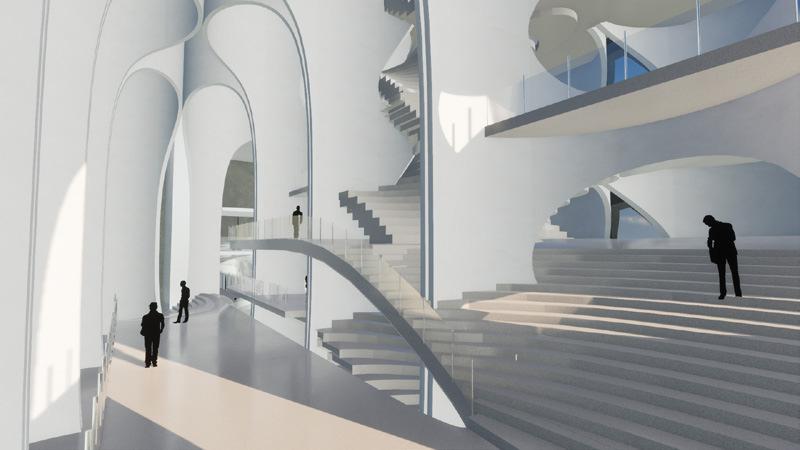
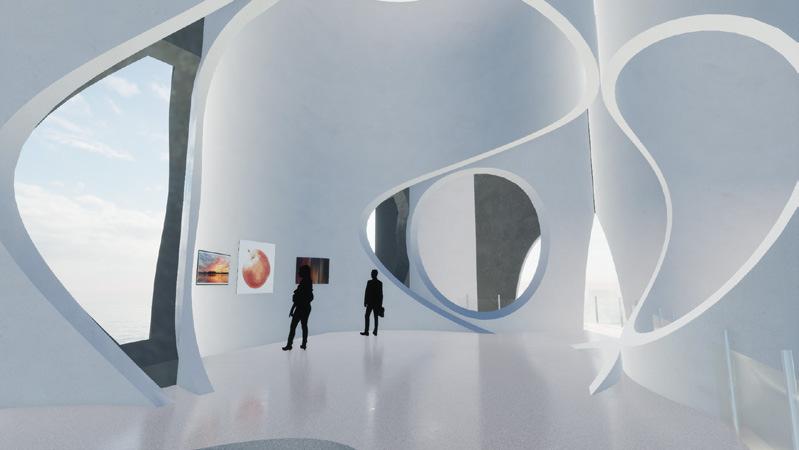
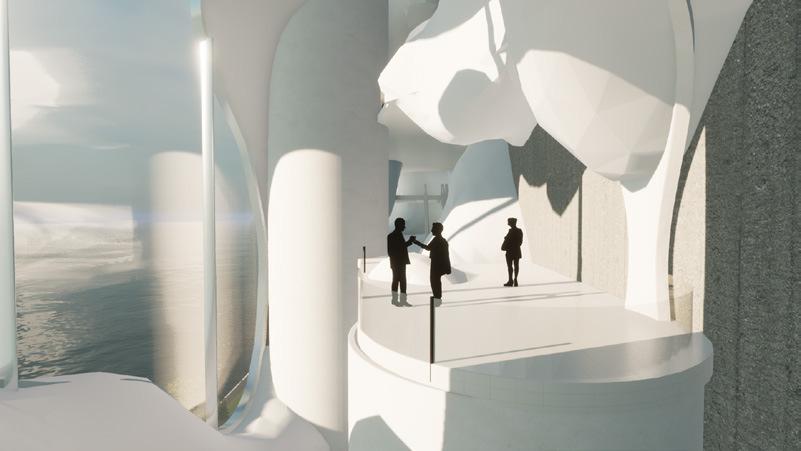
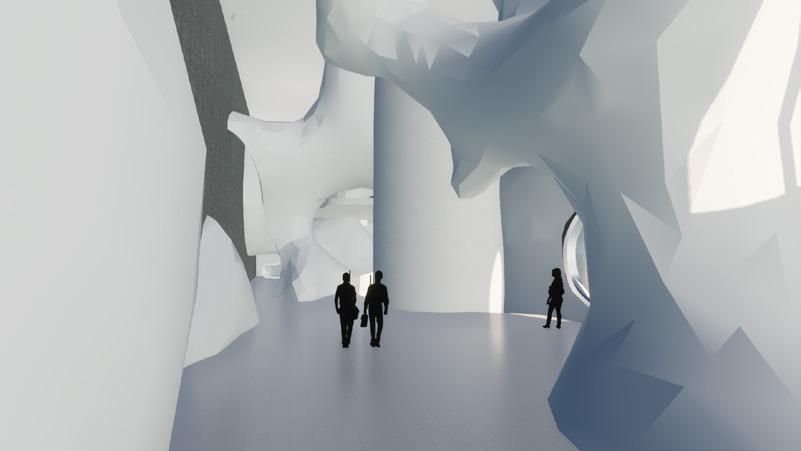
Our proposed concept for the reconstruction of the factory incorporates a combination of positive and negative architectural forms, specifically the gyroid and helicoid. The irregular gyroid structure folds upon itself, resulting in a porous and interconnected lattice-like pattern. This folding technique allows for the creation of versatile positive forms and elements, which in turn facilitate the development of smaller exhibition spaces. Despite their smaller size, these spaces maintain a sense of connection and fluidity within the overall structure. Moreover, the horizontal zoning created by the gyroid patterns produces a contrasting effect when juxtaposed with the vertical spaces of the silos.
On the other hand, the helicoid represents a simplified form derived from the gyroid by subtracting space to create voids. The repetition of helicoid elements generates ample vertical space with a minimalistic approach.
Instructors: Timothy Boll, Andy Bako, Project by Yasaman Pazoki, Shirin Al Asmi, and Kristina Antonio
The circulation diagram illustrates the interconnectedness and movement patterns within the building, clearly delineating the accessibility of different areas. It divides the building into two distinct pathways: a public pathway highlighted in blue, providing access for visitors, and a private pathway highlighted in yellow, exclusively designated for staff members.
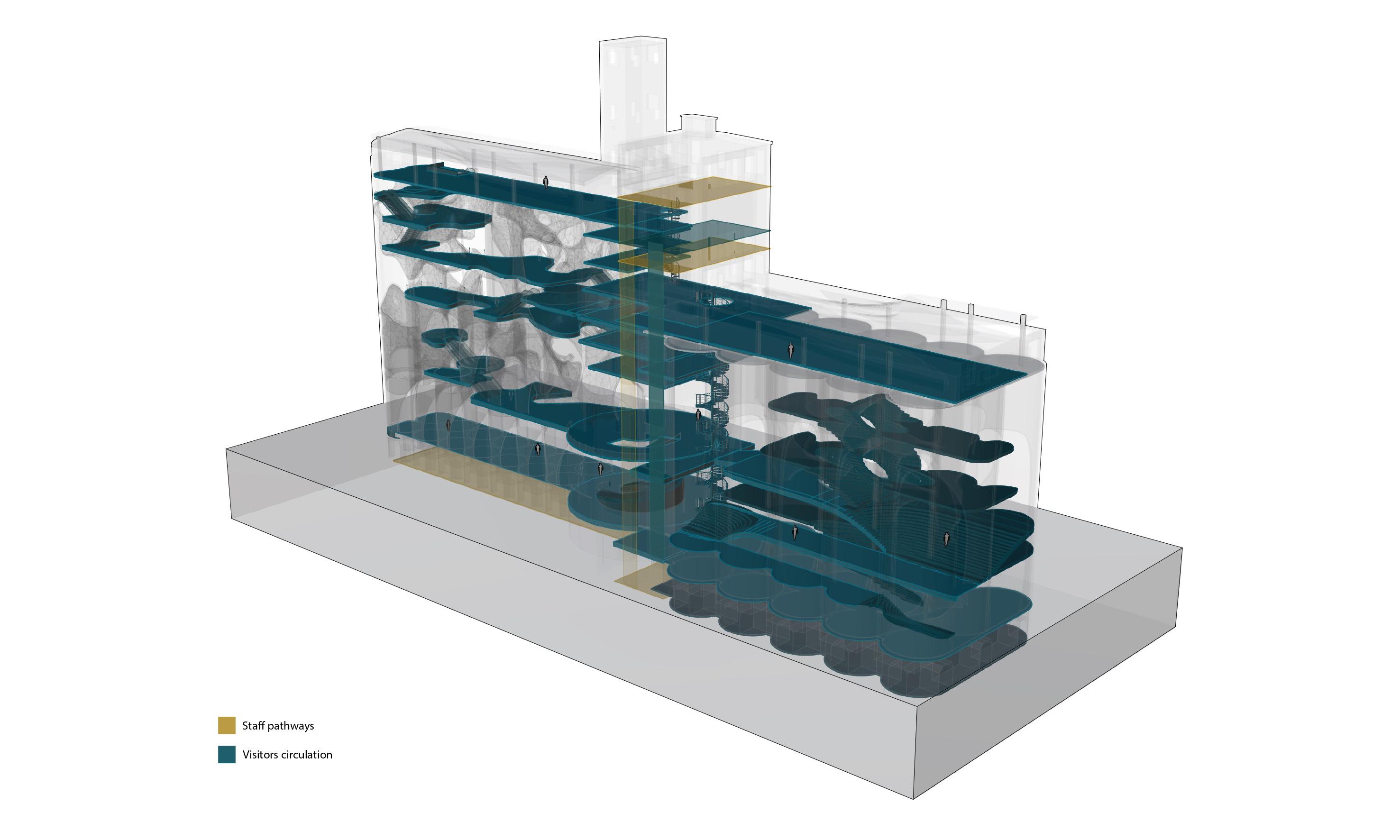

The physical model showcases dimensions of approximately 150 cm x 70 cm x 35 cm. It has been crafted using a combination of hand assembly techniques, laser cutting, and 3D printing technology.
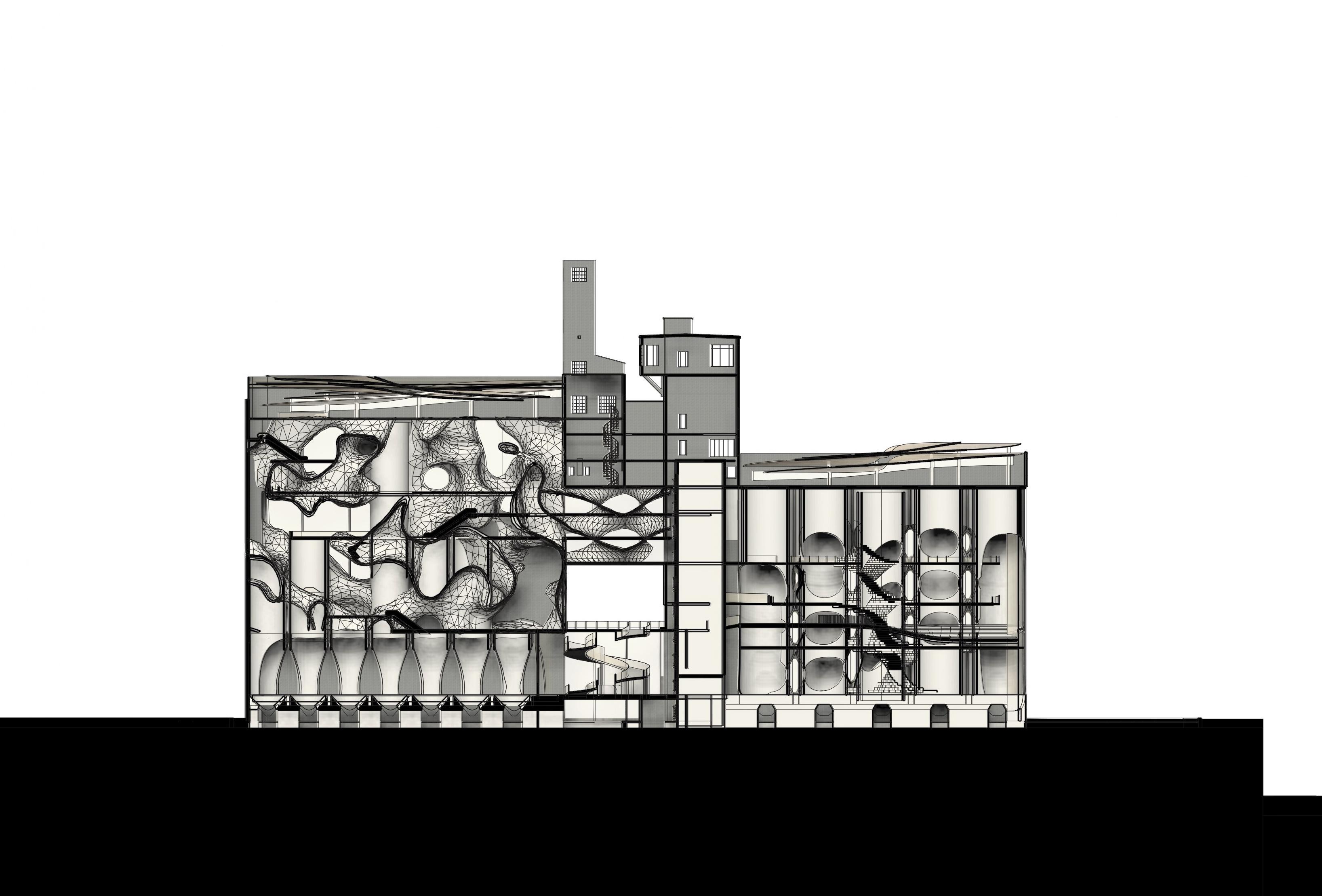
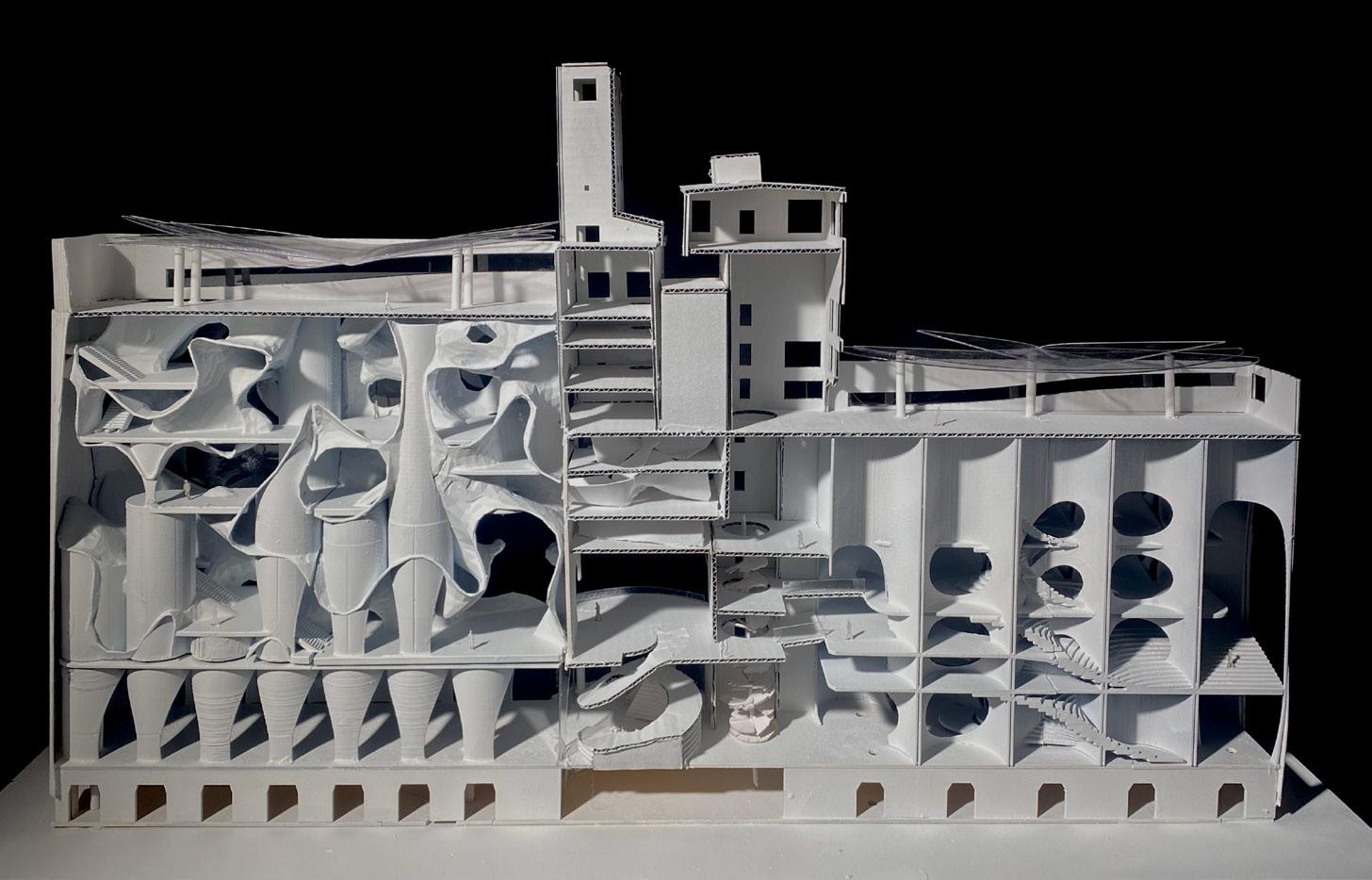
This section was taken halfway through the southern silos. It showcases the harmonious integration of the northern hallway and central lobby, seamlessly connecting both sides. Additionally, it highlights the incorporation of the silos in the southern region.
 southern section central lobby northern hallway
southern section central lobby northern hallway
Faith to Form: Exploring the Intersection of Secularism and Religious Architecture
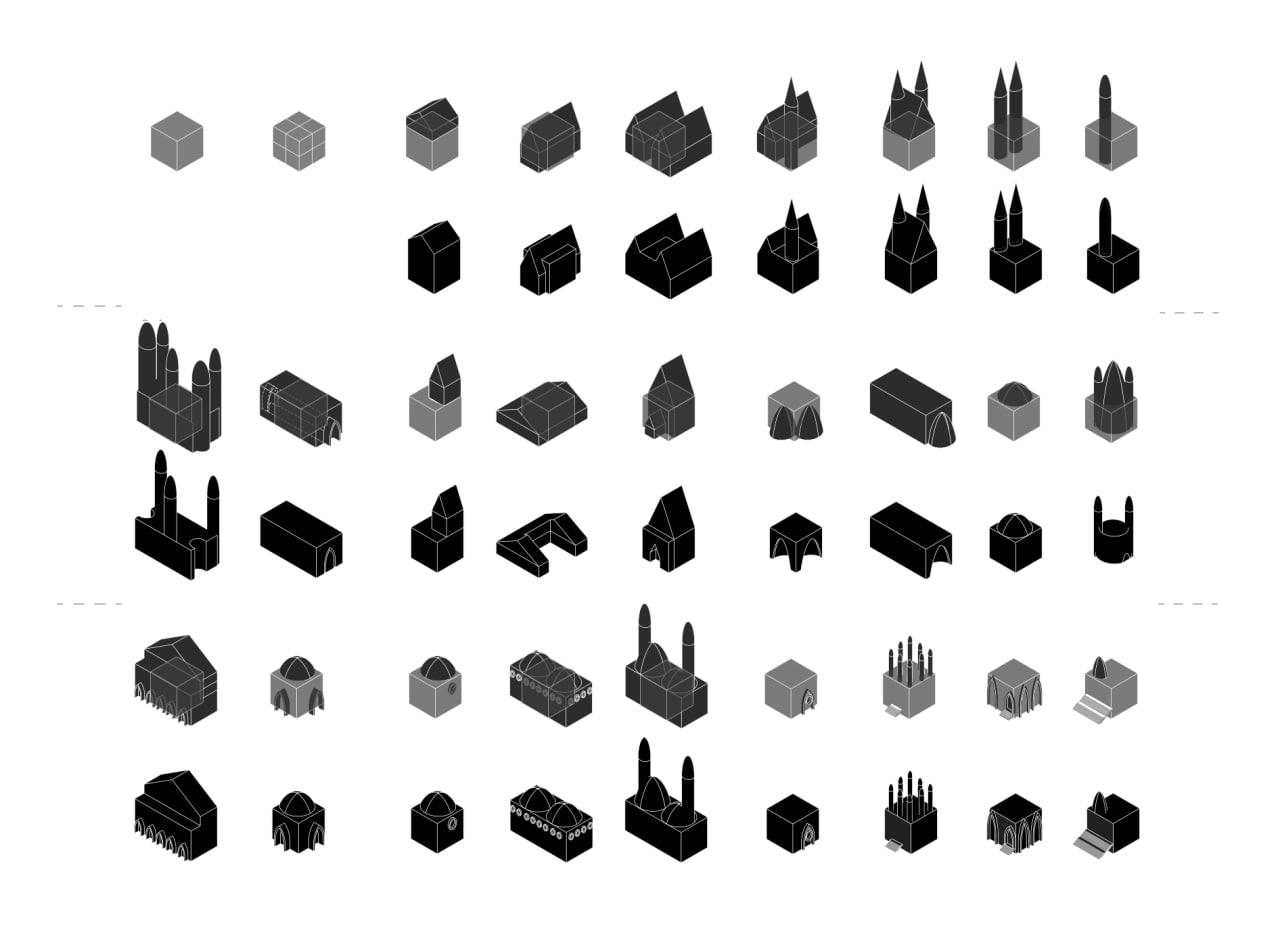
In recent years, the notion of secularism has sparked controversy, particularly after the passing of Bill 21 in Quebec.
The legislation, for one, has been criticized for its marginalization and discrimination towards certain religious communities. While the pursuit of secularism is a worthy objective, the challenge lies in achieving it equitably and without bias. Extending beyond government policies to architecture and the built environment, similar concerns exist regarding the equitable application of secularism. Apparent in the city of Montreal, some places of worship display religious symbols and iconography prominently, while others present a more neutral or modern aesthetic devoid of religious references. This raises the question: how do we ensure that secularism does not become a tool for excluding or discriminating against particular religious communities? Additionally, how do we achieve secularism while recognizing and respecting the diversity of religious buildings?
After identifying the shared formal features in the AI-generated images of existing religious buildings in Montreal, we decided to translate them into a computational program for generating secular religious forms. This composition diagram depicts the aggregated forms, with over 50 different outputs categorized into three main groups. The first group focuses on the addition of forms, while the next group showcases the subtraction of form. Additionally, the third group explores ornamentation, including arches, numerous spires, stairs, and various openings. Our observation reveals that while these buildings possess religious aesthetics, they cannot be attributed to a specific faith.

We aim through our intervention to have demonstrated the feasibility of creating secular and equitable designs for religious buildings. In a time when policies seek to divide and marginalize people, we hope to emphasize the shared characteristics between different places of worship and prioritize the commonalities between religions over their differences in an effort to create a more equitable and less biased application of secularism in the built environment.
Instructor: Paul Howard Harrison
Project by Yasaman Pazoki, Noor Al-Sehail, and Shirin Al Asmi
7
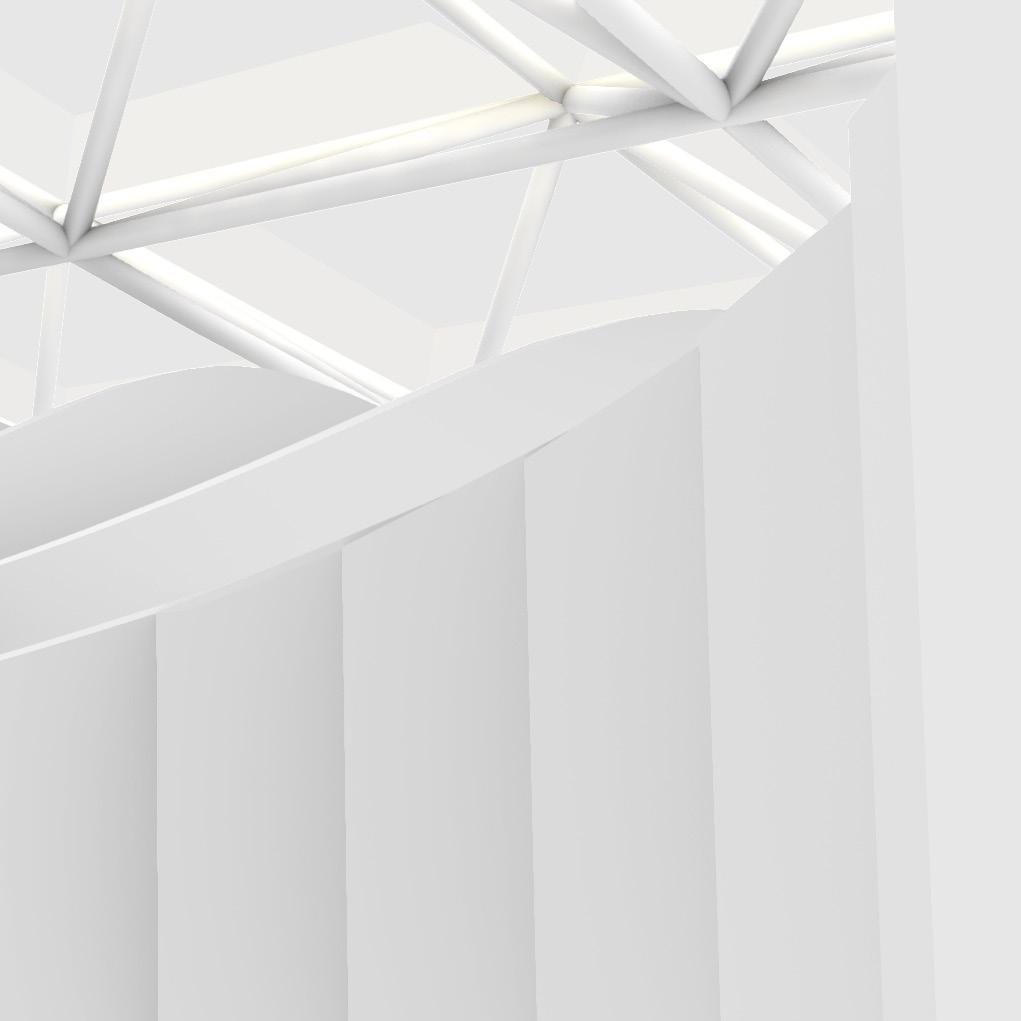
2023 . .
 Yasaman Pazoki Toroudi
Yasaman Pazoki Toroudi





















 Instructor: Nicholas Hoban
Project by Yasaman Pazoki and Abdul Rahman Syed
Instructor: Nicholas Hoban
Project by Yasaman Pazoki and Abdul Rahman Syed


 Top view of the physical model
Top view of the physical model
 Instructor: Nicholas Hoban
Instructor: Nicholas Hoban








 shiho-zashi
sampo-zashi
shiho-zashi
sampo-zashi






 We implemented Japanese joinery principles to develop the joints in the grid system. This diagram provides a glimpse into a small section of our design, offering a closer look at the assembly's structural composition.
We implemented Japanese joinery principles to develop the joints in the grid system. This diagram provides a glimpse into a small section of our design, offering a closer look at the assembly's structural composition.
















